THE POTENTIAL OF ARTIFICIAL INTELLIGENCE
RESEARCH IN LATIN AME RICA
 THE MAGAZINE OF THE UNIVERSITY OF TEXAS AT SAN ANTONIO
FALL
THE MAGAZINE OF THE UNIVERSITY OF TEXAS AT SAN ANTONIO
FALL

 THE MAGAZINE OF THE UNIVERSITY OF TEXAS AT SAN ANTONIO
FALL
THE MAGAZINE OF THE UNIVERSITY OF TEXAS AT SAN ANTONIO
FALL
At the onset of each new semester, I like to take a moment to commemorate the milestones our community has accomplished to date. I am so proud of our incredible students, faculty and staff and remain excited and encouraged about achieving even more as we look towards the 2023-24 academic year.
As you’ll learn in this issue of Sombrilla, our Roadrunners are leading the charge — in the classroom, in athletics and throughout the community. Our collective momentum continues to catalyze opportunities for student success, create an even more competitive landscape for our athletics programs that will benefit all students, and advance critical research to solve society’s grandest challenges.
In the classroom, Roadrunners are making their mark with a record number of national scholarships and awards, including a record number of students earning Fulbright Scholarships, three students being honored with the Barry Goldwater Award, and one student earning the prestigious Harry S. Truman Scholarship Award.
In athletics, Roadrunners are proudly making their debut across 17 women’s and men’s sports in the American Athletic Conference. From women’s golf to baseball to track and field, our student-athletes are competing at higher levels than ever before, increasing national exposure for our university and advancing opportunities for all Roadrunners to succeed. I’m excited to witness the new heights we will reach this year and for years to come.
In the community, Roadrunners are undertaking critical research on timely issues such as artificial intelligence (AI) that will change the way we live, learn and work. Our research enterprise is advancing — and transforming — applications across industries, especially in the field of neuro-inspired AI. You’ll learn more about this groundbreaking science in this issue as well as UTSA’s innovative uses of AI in the classroom.

For these reasons and more, I am immensely grateful to be a part of our Roadrunner community. Individually, our students, faculty and staff are achieving greatness in their respective fields. Together, we are leading the charge toward becoming a university of the future in the city of the future — and more importantly, becoming a great place to grow, learn and work.
With appreciation,
UTSA leads communityengaged research in Latin America.
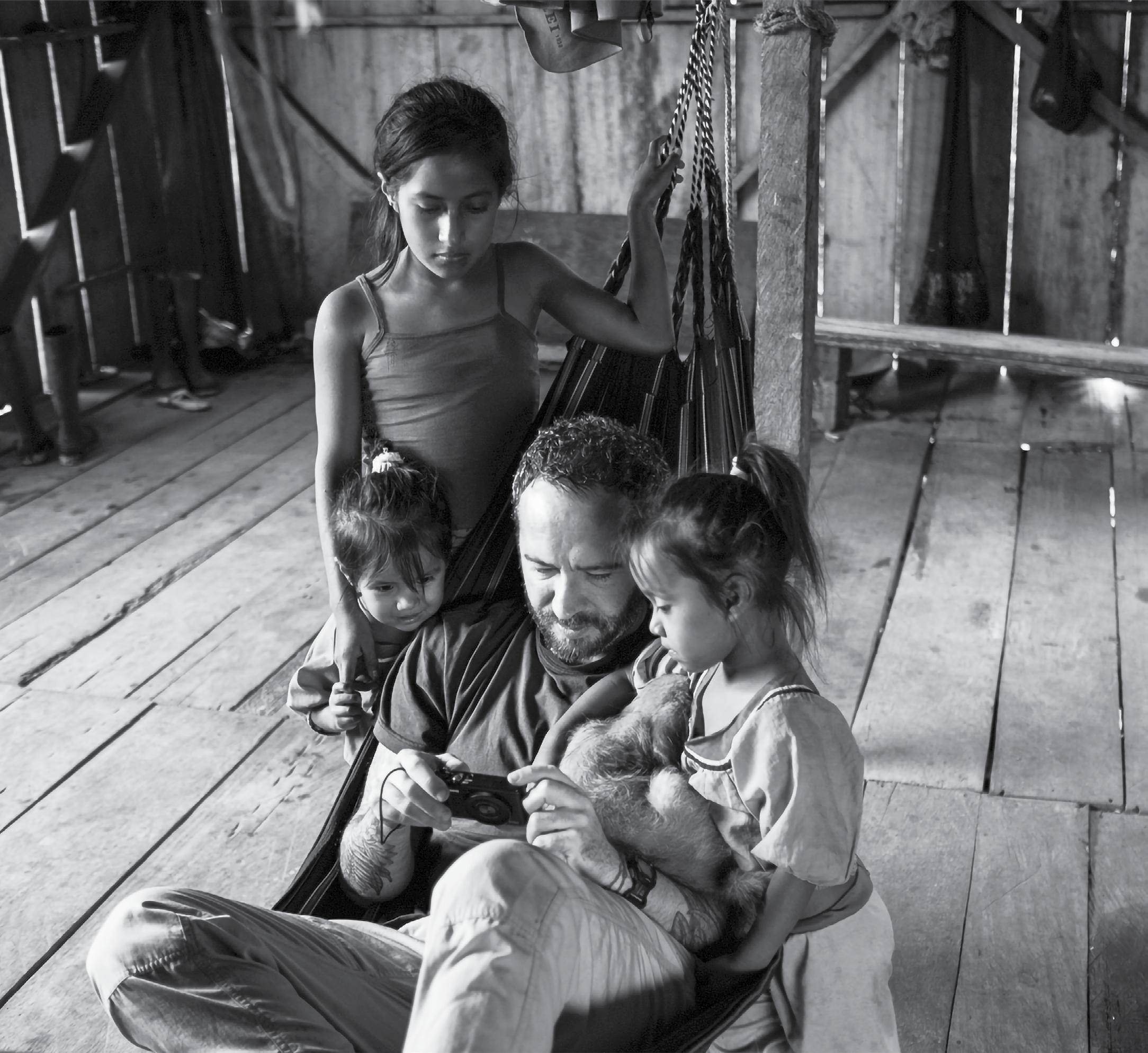
4 Plazas & Paseos
8 Discovery at UTSA
20 FEATURE Taking the Leap
28 FEATURE The AI Whirlwind
Plazas & Paseos
4 A FRESH CANVAS
UTSA Southwest is expanding opportunities for youth art education across San Antonio.
36 ’Runners & Shakers
8
DISCOVERY AT UTSA
40 Q&A Between the Lines
16
TAKING THE LEAP
As UTSA steps up to the American Athletic Conference, learn about how the Roadrunners’ sports success is bolstering the university’s notoriety and deepening San Antonio’s connection with UTSA.
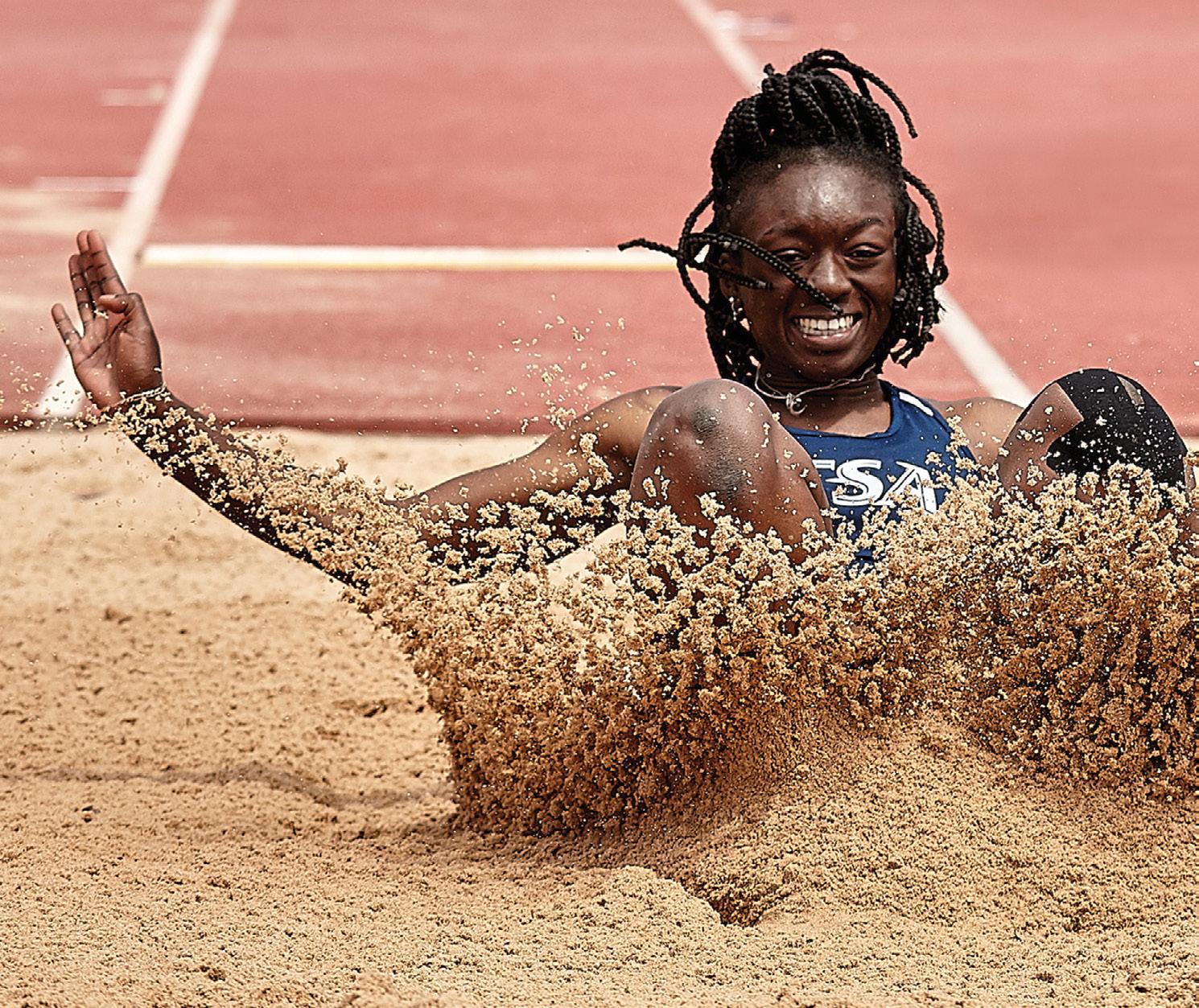
Roadrunners are making their mark on the world with a record number of national scholarships and awards.
THE PATH OF TOTALITY
Astronomer Angela Speck discusses San Antonio’s rare opportunity to view a total solar eclipse.
20 10
BUILDING TRUST
Anthropologists Michael Cepek and Rebecca Bria are building a strong foundation for the future of two Latin American Indigenous communities.

38
BETWEEN
Kimberly Garza, associate professor of creative writing, discusses her new book "The Last Karankawas" and her journey to becoming a writer.
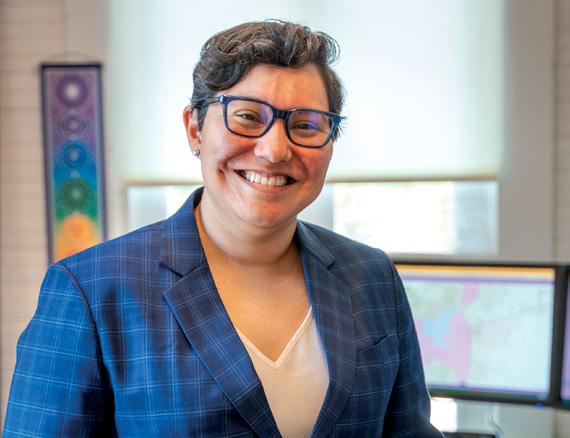
TAYLOR EIGHMY PRESIDENT
TERESA NIÑO VICE PRESIDENT FOR UNIVERSITY RELATIONS
JOE IZBRAND ASSOCIATE VICE PRESIDENT FOR STRATEGIC COMMUNICATIONS AND EXTERNAL AFFAIRS
MARGARET LAMAR MANAGING EDITOR
VALERIE BUSTAMANTE JOHNSON SHEA CONNER SENIOR EDITORS
CHRISTI FISH TRICIA LYNN SILVA ASSOCIATE EDITORS
ARI CASTAÑEDA AMANDA CERRETO CATHERINE FLORES CONTRIBUTING WRITERS
CORAL DIAZ NOELLE ARTIGUE GRAPHIC DESIGNERS AND ILLUSTRATORS

KATIA DIAMANTE SOCIAL MEDIA EDITOR
Are you interested in sharing news with members of the UTSA community? Or would you like to change your contact details or subscribe? Please contact us:
SOMBRILLA MAGAZINE OFFICE OF UNIVERSITY
STRATEGIC COMMUNICATIONS ONE UTSA CIRCLE SAN ANTONIO, TX 78249-1644
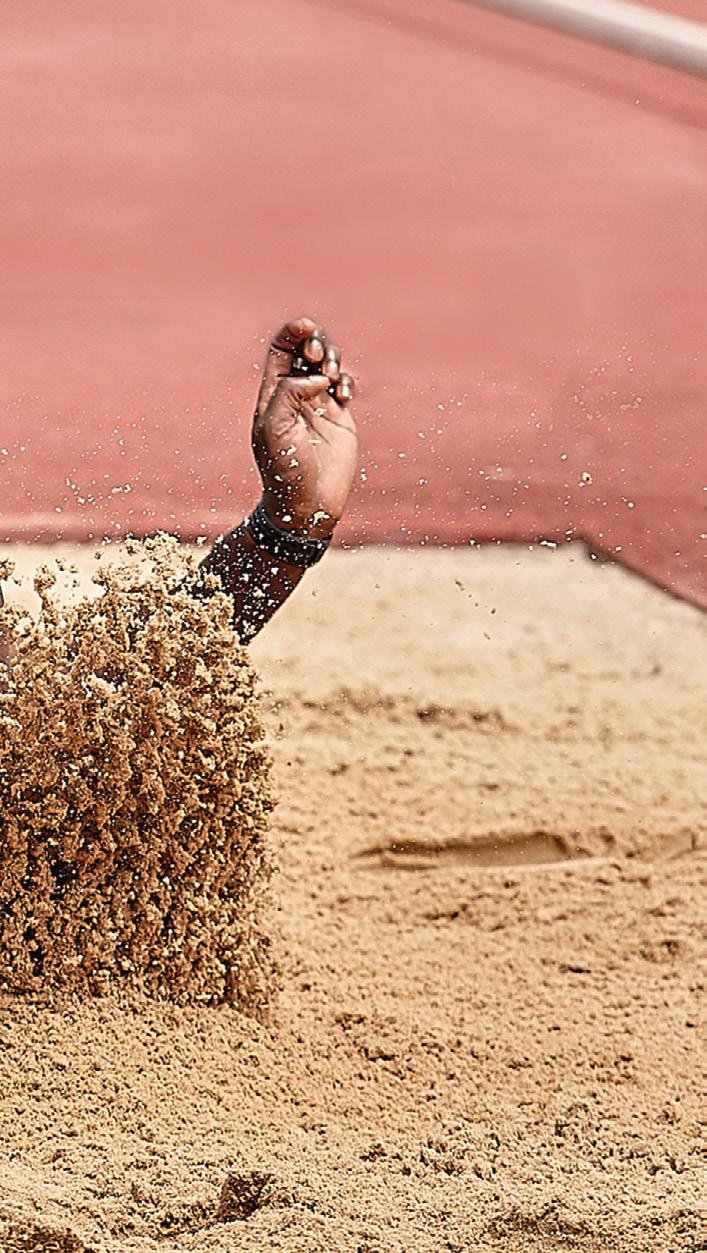
SOMBRILLA@UTSA.EDU
Sombrilla Magazine is the official publication of The University of Texas at San Antonio. It is distributed without charge to students, alumni, faculty, staff and friends of UTSA. The magazine strives to capture the intellectual, cultural and social life of the university.
sombrilla /sohm–BREE–yah/ Spanish for Umbrella



the institution’s mission since the school's founding more than 50 years ago when a group of local art educators met at La Villita in downtown San Antonio to offer art classes on the weekends after discovering the lack of access to art education in some San Antonio communities.
“Our mission is to create accessibility for the young artists of San Antonio and to have different access points to our programs,” says Patricia Morales, UTSA Director of Young Artist Programs. “I think that being able to break down barriers at a younger age for our populations in San Antonio is important, and also getting them connected to an institution of higher learning at an early age is important.”
At this year’s Fiesta Arts Fair, dozens of tiny hands were hard at work using rolling pins, smashing, squeezing and molding pieces of clay into fun shapes that fit their wildest imaginations. They created dogs, bowls of spaghetti, horses, nests and even Swiss cheese, all with intense focus and smiles on their faces. For UTSA Southwest educators, sights like this can be seen just about any day of the week as part of the school’s community art programs.
In the summer of 2022, San Antonio's beloved Southwest School of Art, integrated with UTSA to create UTSA Southwest, continuing the school's legacy of fine art education for the San Antonio community. Along with the youth programs, the adult art classes have long been a favorite with a loyal following year after year with classes in a variety of media such as printmaking, weaving, glass sculpture and watercolor painting. Both the adult and youth art classes are a part of UTSA Professional and
UTSA Southwest is also building on a strong foundation to grow the Bachelor of Fine Arts program, now situated within the UTSA School of Art in the College of Liberal and Fine Arts.
While the academic and community art programs grow, it is the rich legacy of youth art that has even more innovative programming than ever, both on the UTSA Southwest Campus and with partners across the city. Providing art education for youth has been an important priority in

Currently, UTSA Southwest community youth programs serve about 1,500 local students and another 500 youth in schools and social service agencies.
On some days, families can be seen working with clay, painting or making origami. On others, teens gather in the Teen Studio Intensive after a long day of school to hone their art skills. The programs offered include Saturday Morning Discovery, B-Movie Cinema Club, Kids Initiating Design Solutions (KIDS) Elementary Architecture
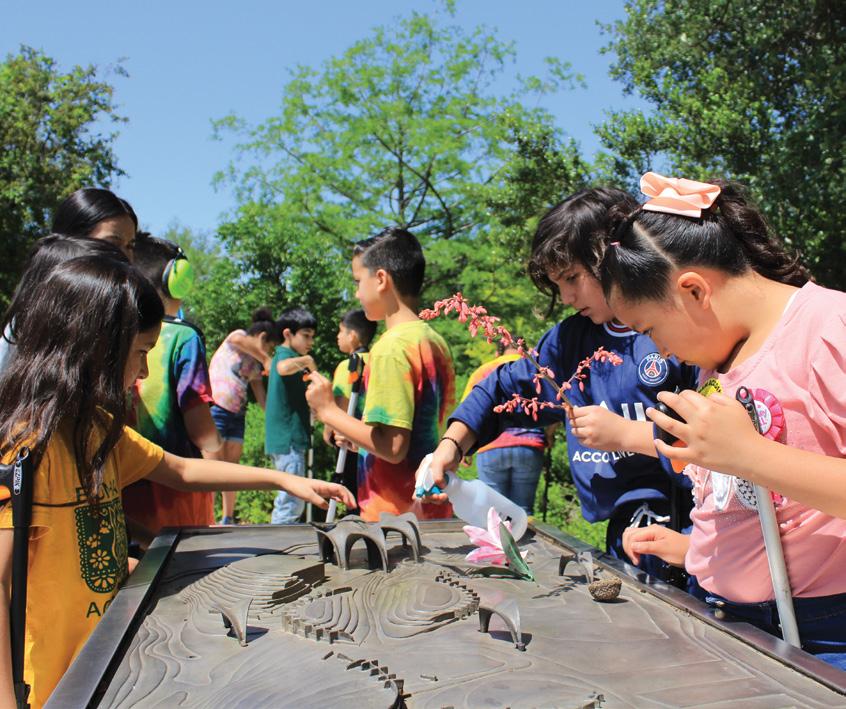 left: A young girl makes a sculpture in the Young Artists Garden during the 2023 Fiesta Arts Fair. right: Students learn about architectural design at Confluence Park along the San Antonio River.
left: A young girl makes a sculpture in the Young Artists Garden during the 2023 Fiesta Arts Fair. right: Students learn about architectural design at Confluence Park along the San Antonio River.
Program, Teen Studio Intensive, the Summer Art Studio and the Nature of Art camps that are held at Confluence Park in partnership with the San Antonio River Foundation. UTSA Southwest also works with local school districts to assist with the programming.
“Saturday Morning Discovery is our legacy program that started it all. It’s a free two-hour program on Saturdays where families can sign up for a month at a time,” Morales says.
Morales adds that the weekend program serves as an entry point into the other young artists programs and allows families to familiarize themselves with the campus. Those who are interested in exploring the arts even further can enroll in the Summer Art Studio classes, with over 100 courses taught by 40 local artists and art educators. It’s the most comprehensive and largest K-12 summer arts experience in the city and has scholarships available.
With the programs now part of UTSA, Morales says she has many hopes and goals for the programs to evolve.
“One of my dreams is to create a really intensive summer program for high school students who are interested in working on a portfolio to get into
college,” Morales says. “Getting the opportunity to experience something like that can really impact the trajectory of their education and creative pursuit. This program could be a direct connection to registration for the UTSA School of Art.”
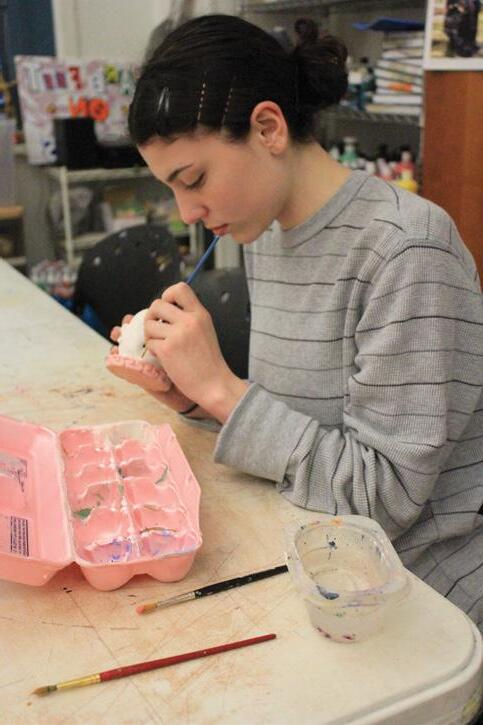

Morales emphasizes that the art classes at UTSA Southwest are having a big impact on students, especially as families search for new ways to improve the mental health of their children and teens.
“We know when students have access to creative processes, it shows them to be creative thinkers. Their critical thinking skills are heightened. Their ability to try something, fail at something and try again is really important,” she says. “We want to encourage the youth to be individual thinkers. We want them to be able to use their voice.”
For Gianna Carruth, a freshman at the North East School of the Arts High School, the teen program has been a meaningful experience.
“This is a safe space for me. I really come here to escape and get away from school work and life as a teenager. I just love that I can work on my art and that’s it,” Carruth says. “I think what drew me to this program was
the creative freedom we’re allowed to have and explore. We can express our own thoughts and feelings.”

Morales, who has been working on the programs for about 10 years, says she’s seen and heard firsthand the impact these programs have on the youth.
“We’ve seen so many students flourish. Probably the ones that have been most meaningful have been our teen programs,” Morales says. “A lot of our youth have been going through a lot with COVID, stuff going on in their community, and their identities. We’ve had parents tell us we have saved their children’s lives. Before this program they were worried about what their student may do to themselves or may be faced with. After being in the program, their students feel safe, creative, respected and successful. The trajectory of these student’s lives has been totally changed by the program.”
“Seeing their growth is the most rewarding thing,” Morales continues. “Seeing the joy they get to have when they show off their work to the people they love and seeing the personal growth they have as just people — I think that is the most rewarding thing I’ve seen.” S
The trajectory of these students' lives has been totally changed by the program.
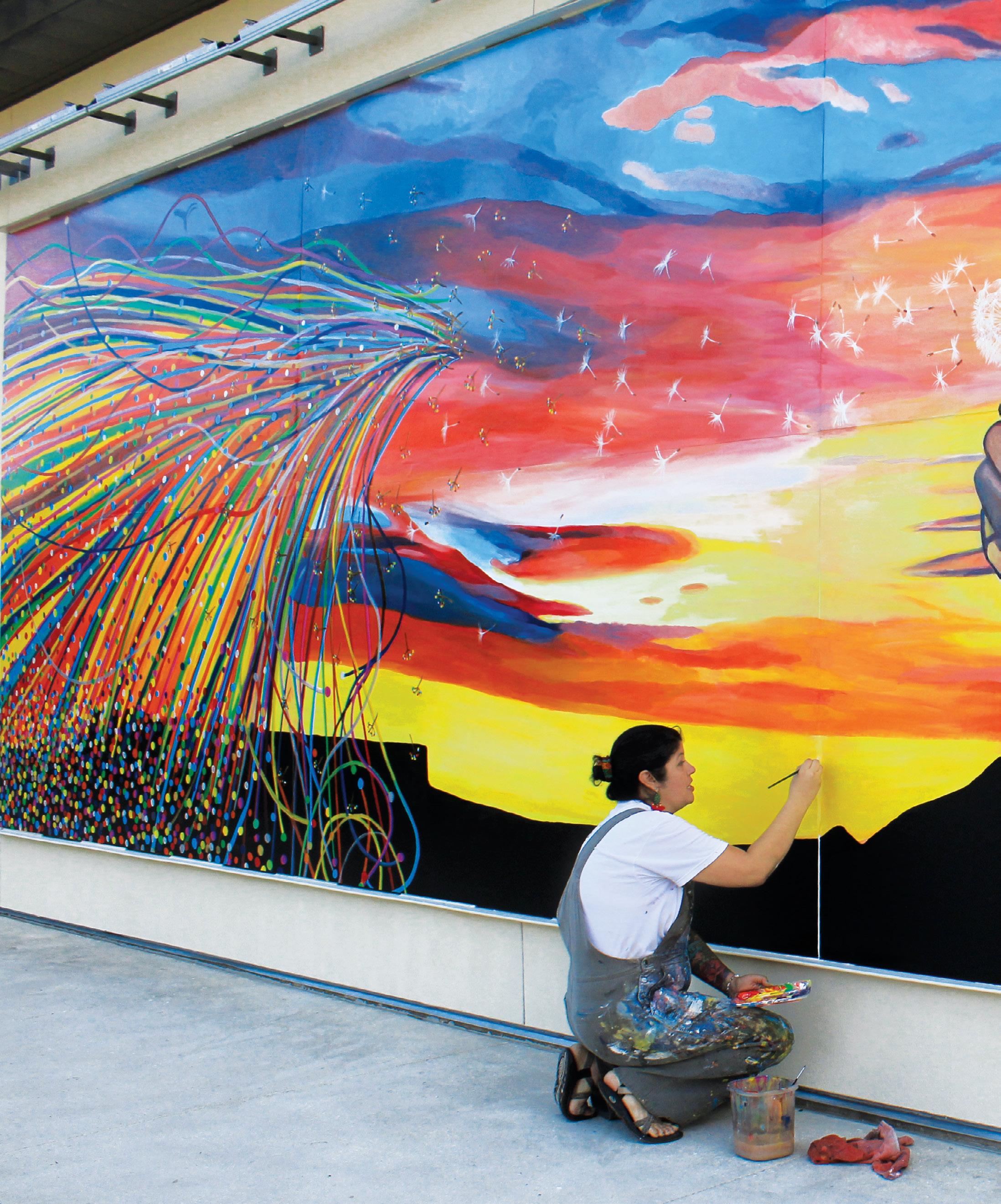
pidiendo
Cristina Sosa Noriega adds touchups to her new mural on the west facade of UTSA's San Pedro I building in Downtown San Antonio. The mural portrays a young Mexican American girl making a wish for her future with floating dandelion seeds transforming into color streaks and dots representing data, or “art fueled by science,” as described by Noriega.
 un deseo
un deseo
Roadrunners are making their mark on the world with a record number of national scholarships and awards
IS THE FLAGSHIP INTERNATIONAL EDUCATIONAL EXCHANGE PROGRAM SPONSORED BY THE U.S. GOVERNMENT. IT IS DESIGNED TO INCREASE MUTUAL UNDERSTANDING BETWEEN AMERICANS AND PEOPLE IN OTHER COUNTRIES
MADELINE MORALES
will travel to Sweden to pursue a master’s degree at Umea University. She will study how Sweden serves as a model for policies and practices in sustainability. As a UTSA student, Morales co-founded a student-led climate change action group at UTSA called Plant the Future.

PAULA CANALES
will be serving as an English as a Second Language teacher in Bahrain after earning her master’s degree in Teaching English as a Second Language (TESL) from the UTSA College of Education and Human Development.
ELIESHA PEREZ hopes after spending a year in Thailand as an English teacher she will be prepared for a career that focuses on international development and disadvantaged youth education. While at UTSA, Perez created a pen-pals program that linked students from Edgewood ISD to UTSA students to learn about pathways to college.
AXA SORIA is traveling to Mexico, where she will teach English. After she returns to the U.S., she plans to work as a medical interpreter in San Antonio.
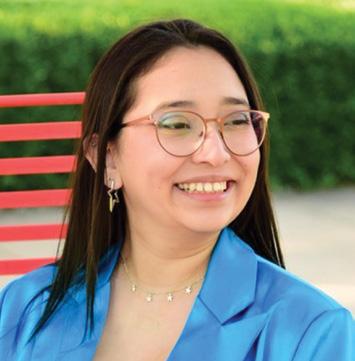

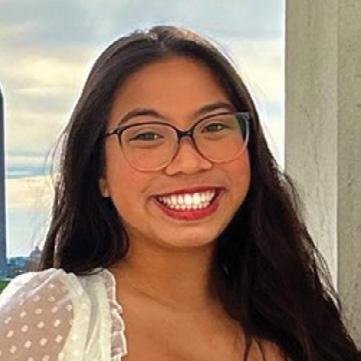
JOSHUA PEREZ will teach English in Turkey, having connected with Turkish students during a study abroad trip in Russia. Perez wants to work with UNESCO’s education branch to address gender inequality in education on a global scale.
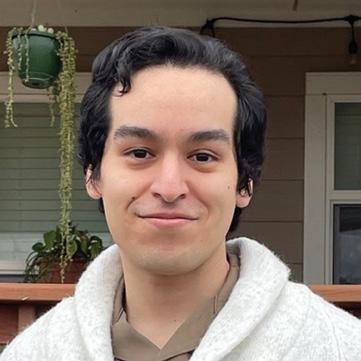
IS ONE OF THE MOST PRESTIGIOUS NATIONAL SCHOLARSHIPS FOR UNDERGRADUATE STUDENTS ENGAGING IN RESEARCH IN THE NATURAL SCIENCES, ENGINEERING AND MATHEMATICS.
MARISSA COPPIN spent her first two years at UTSA participating in the Enhancing Science, Technology, Engineering, and Math Educational Diversity (ESTEEMED) program, which trains first and second-year students in STEM fields. Coppin conducts research in the UTSA Hsieh Lab to study mouse models of acute and chronic epilepsy.
I’ve learned that diversity allows any field to reach new heights, as those with different experiences can contribute to not only the richness of the field but the richness of culture.
ERNESTO FLORES is not just committed to science, he’s committed to his community. As an undergraduate researcher, Flores currently works in the Functional Nanomaterials Laboratory, and in 2024 he plans to pursue a Ph.D. in physics, conducting research in experimental biophysics.
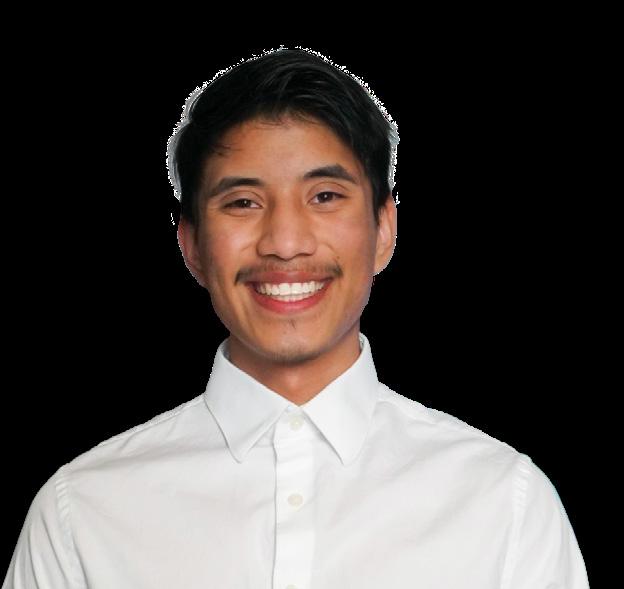
My main goal as a first-gen student is to bring science, physics, and research to young students that are part of bilingual and English as a Second Language programs.
SEAN MCFADDEN served as a special operations combat medic in the U.S. Navy prior to his time at UTSA. He joined Jing Yong Ye’s Biomedical Engineering Laboratory, which conducts research in biomedical optics and nanobiotechnology.
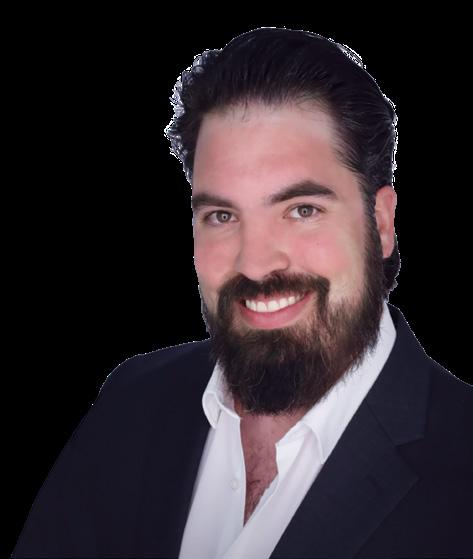
My dream career would allow me to leverage scientific innovations in the lab and implement them as treatments that will improve the longevity and health of the military and veteran communities.
IS A HIGHLY COMPETITIVE NATIONAL SCHOLARSHIP AWARDED TO STUDENTS WHO DEMONSTRATE OUTSTANDING LEADERSHIP POTENTIAL, A COMMITMENT TO A CAREER IN GOVERNMENT OR THE NONPROFIT SECTOR, AND ACADEMIC EXCELLENCE.
MARGOT DUQUE is pursuing her passion of tackling educational disparities in the U.S. She intends to pursue master’s degrees in both public policy and applied economics to address gaps in quality of life and educational attainment through quality public education.
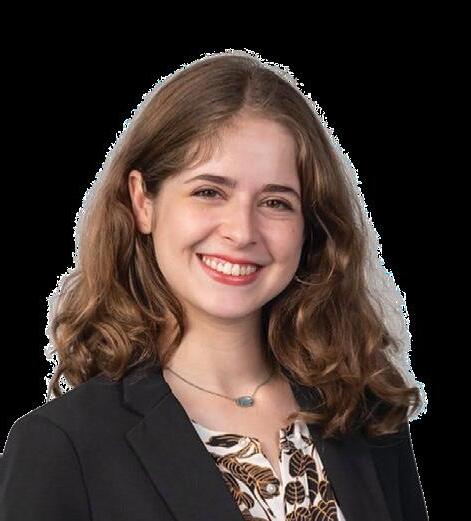
I realized early in my junior year that I was going to need more education to develop the kinds of skills that would best help me to serve students and their families.

Michael Cepek and Rebecca Bria have spent decades establishing mutual bonds with Latin American Indigenous communities to ensure their long-term wellbeing. Their research is not as much for or about the people they research, but instead it is cocreated with them as collaborative partners.
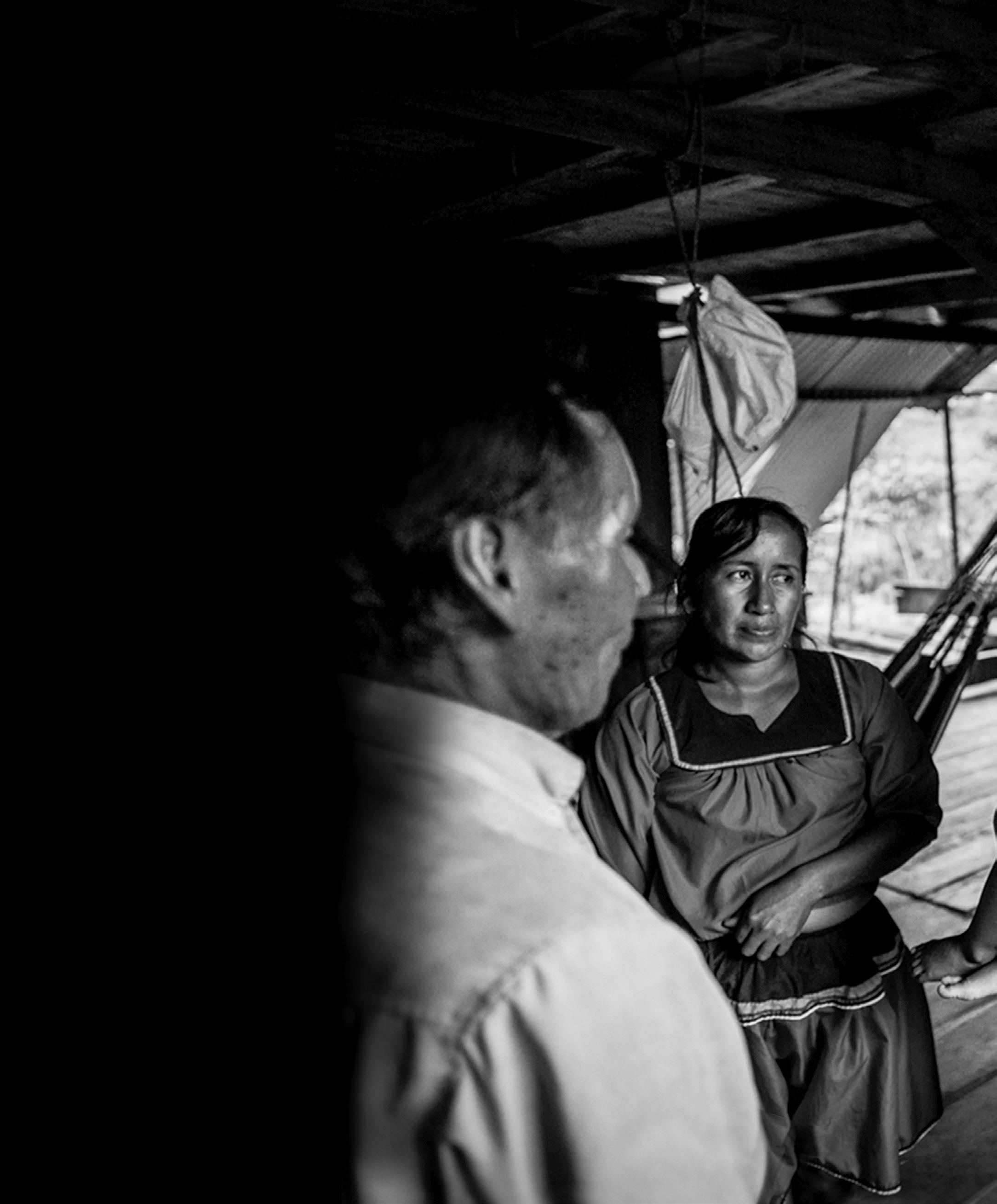
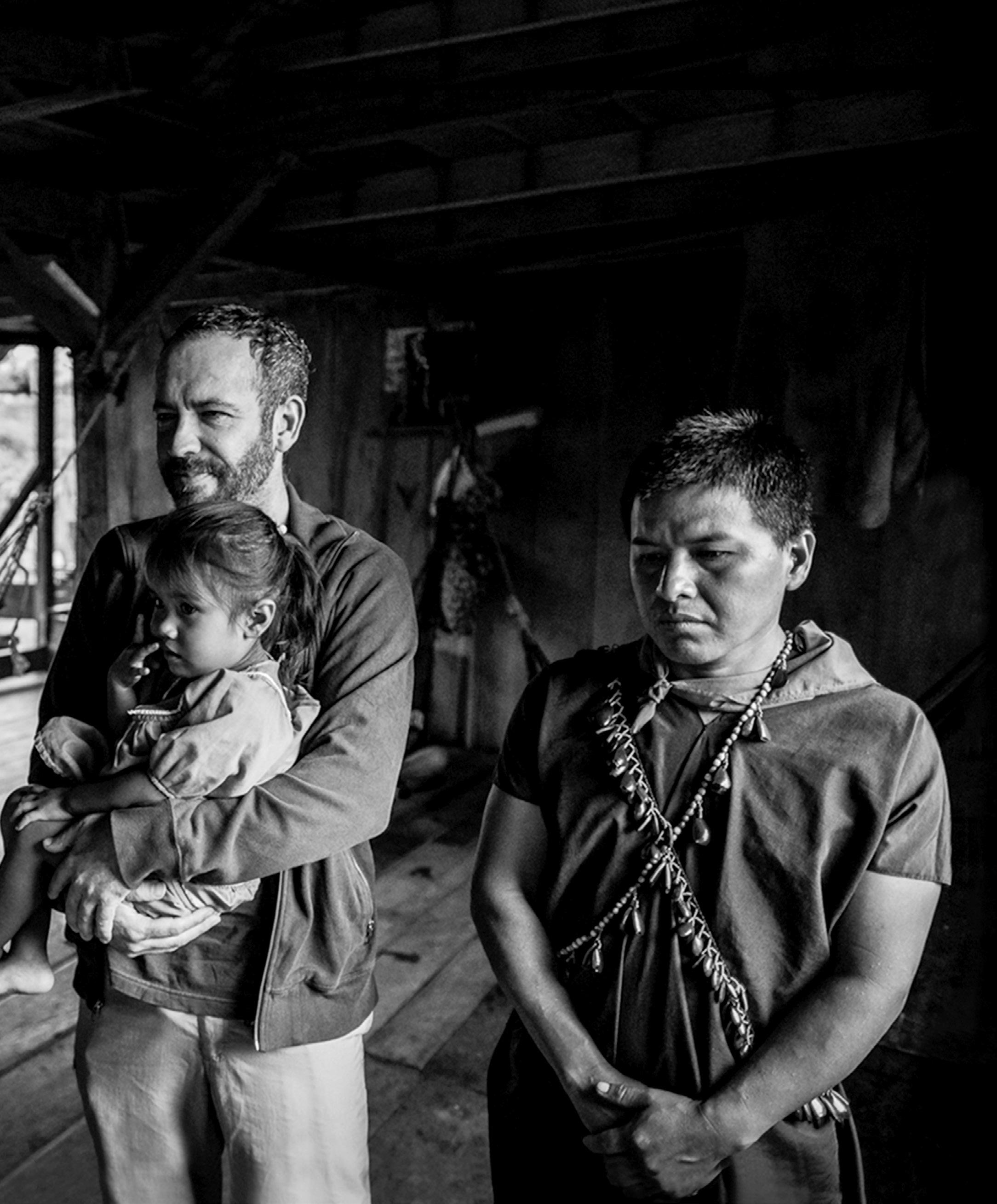 by MARGARET LAMAR
by MARGARET LAMAR
In a village in the foothills of Ecuador’s Andes mountains, Cesario Lucitante, a shaman in the Cofán Nation, prepares for his healing ritual. He drinks the hallucinogenic ayahuasca, and the session begins. In a small wooden hut dimly lit, he chants and crunches in his mouth what sounds like gravel, and for hours he performs ancient healing rites to extract the illnesses that reside within his patient.
When we think of Indigenous shamans, it’s common for us to think of healing rituals such as this, but our ideas are often simplistic and one-dimensional. As Michael Cepek, professor of anthropology in the UTSA College of Liberal and Fine Arts, dives deeper into his understanding of the Cofán people, the expansive and complex knowledge of the shamans becomes increasingly fascinating. With support from a prestigious Guggenheim Fellowship, his experiences researching Cofán shamanic practices will be described in a book co-authored with Lucitante
entitled, “Visionary Violence: Shamanism, Dispossession and Death in Amazonia.”

For more than 30 years, Cepek has committed himself to activism and research with the Cofán people, living among them and learning their ways. He decided early in his career that he would not be an anthropologist who conducts research solely as a consumer of knowledge. When he began working with the Cofán, he made a lifelong promise to them to work alongside them and do everything in his power to fortify their future against the pressures of displacement.
“There’s no division between my life, my activism and my research. I go to Ecuador every year for at least a month, and all together I’ve lived among the Cofán for over five years,” Cepek says. “It’s not a situation I could imagine walking away from. I would lose myself and everything I am. Every part of my life would just disappear.”
Cepek makes it clear that trust is at the root of everything he does among the Cofán.
“The Cofán people really know that I love them and I love being there,” he says. “That is an end in itself. It’s not a means to something else. And I think they really recognize that.”
He shares that the first and most important step toward earning their trust was to learn their language.
“The time and effort it takes to learn the language is a symbol of how much you care about people. And it allows you to talk to everybody, not just the people who’ve gone to school and learned Spanish,” he says. “The Cofán language is spoken in the house, and knowing it allows me to be part of the conversations, to joke and to know how to make people laugh.”
Cepek earned permission from the Cofán shamans to capture extensive video footage of their healing rituals. To gain a deeper understanding of what he captured, he sat with Lucitante and his son, Octavio, also a practicing shaman, spending extensive hours collaboratively reviewing the videotapes. Cepek recounted a time when they worked together to describe a moment in the footage. “How do you say the word for soul?” Cepek asked them. The three men went back and forth, trading insights rich with Indigenous ways of knowing, questions on the nuances of the Cofán language and insights that will be revealed in their forthcoming book.
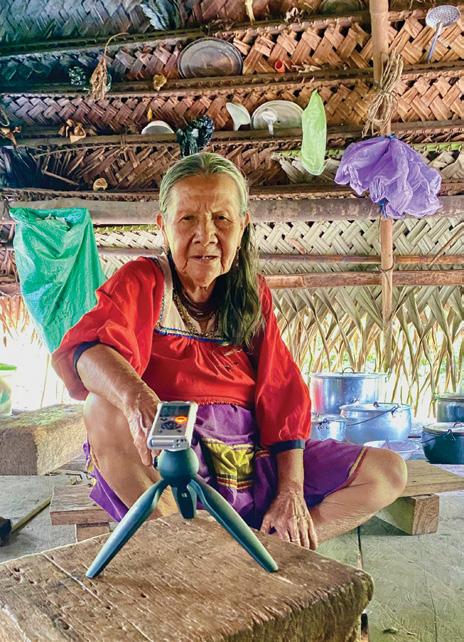
“They know so much about their culture, but it’s embodied knowledge. A lot of shamanism is visionary knowledge. It’s not something you tell people; it’s something you know through direct experience,” he explains. “To get someone else from a different culture to understand it is hard, even if they consider you partially part of their culture and you speak their language. They’ve never had to do that before. It was really intimate.”
The Cofán people experience several threats to their territory, mostly from oil companies. Cepek’s 2018 book, “Life in Oil: Surviving Disaster in the Petroleum Fields of Amazonia,” assesses how 50 years of oil extraction has impacted Cofán lands, their lives and how the Cofán have managed to maintain a meaningful existence in this petroleum-saturated environment.
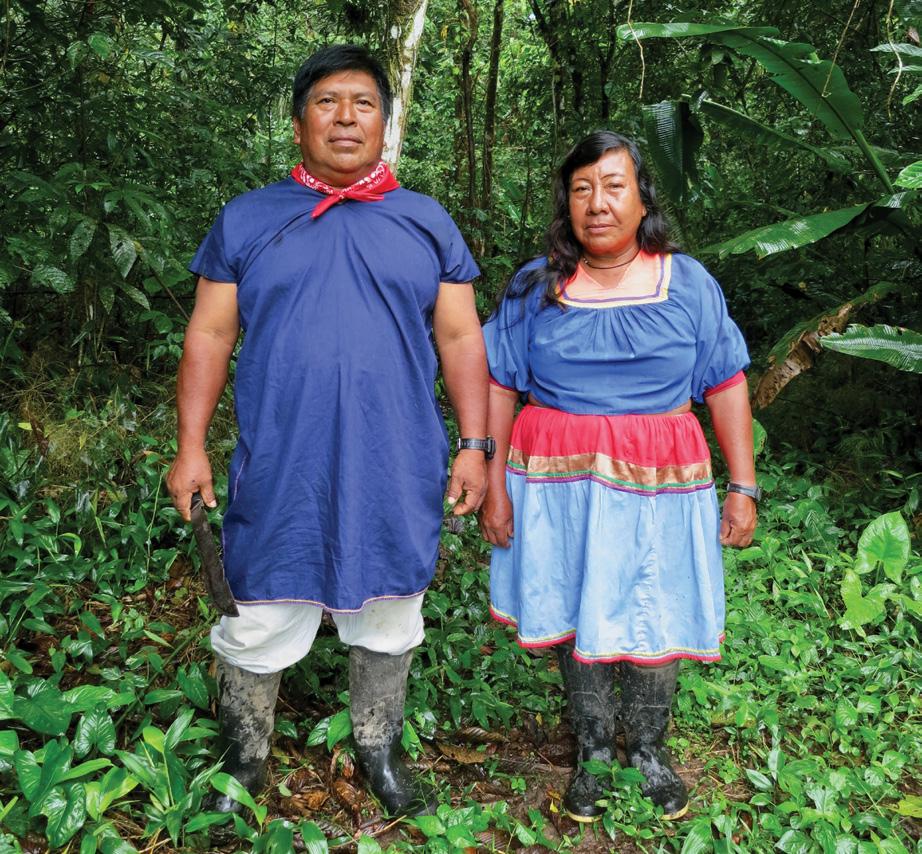
Throughout these decades of work, Cepek has advocated and supported the efforts to strengthen the Cofán people’s position in the face of these threats. He now serves as the president of the Cofán Survival Fund, a nonprofit 501(c)(3) that supports Cofán-directed environmental, medical and educational projects in Ecuador. Together they launched the Cofán Higher Education Project, which has now secured more than $300,000 to support the primary, secondary, undergraduate and graduate education of Cofán students in Ecuador’s best schools and universities.
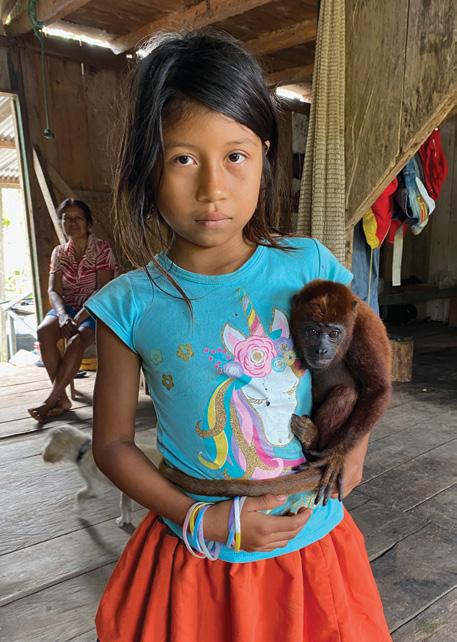
“Some will go into law and become lawyers and some will go into medicine. And that can really save a people. It really can,” Cepek says.
Cepek has also recruited and secured funds for two English-speaking members of a Cofán community to earn their doctorates in anthropology at UTSA. He is advising both students as they study the culture, history and politics of their people to become the first Indigenous Amazonians with doctorates in anthropology from a U.S. institution.
Research and activism blend seamlessly for Cepek as he works for Cofán political causes, including policy papers, expert reports, amicus briefs and documentary films. His vision is to secure the expertise and leadership capacity within the Cofán community. He is committed to creating an archive in which every single piece of data, field note and video that he has collected will belong to the Cofán Nation.
The time and effort it takes to learn the language is a symbol of how much you care about people.previous page: Michael Cepek with the family of Alejandro Criollo, the main figure in his book on the impact of the oil industry on the Cofán Nation. top left: A Cofán girl with her pet howler monkey. top right: A Cofán elder sings laments about her life into Cepek’s digital recorder. bottom: A Cofán couple in the community of Zábalo, the site of Cepek’s book about their efforts to protect their rivers and forests.
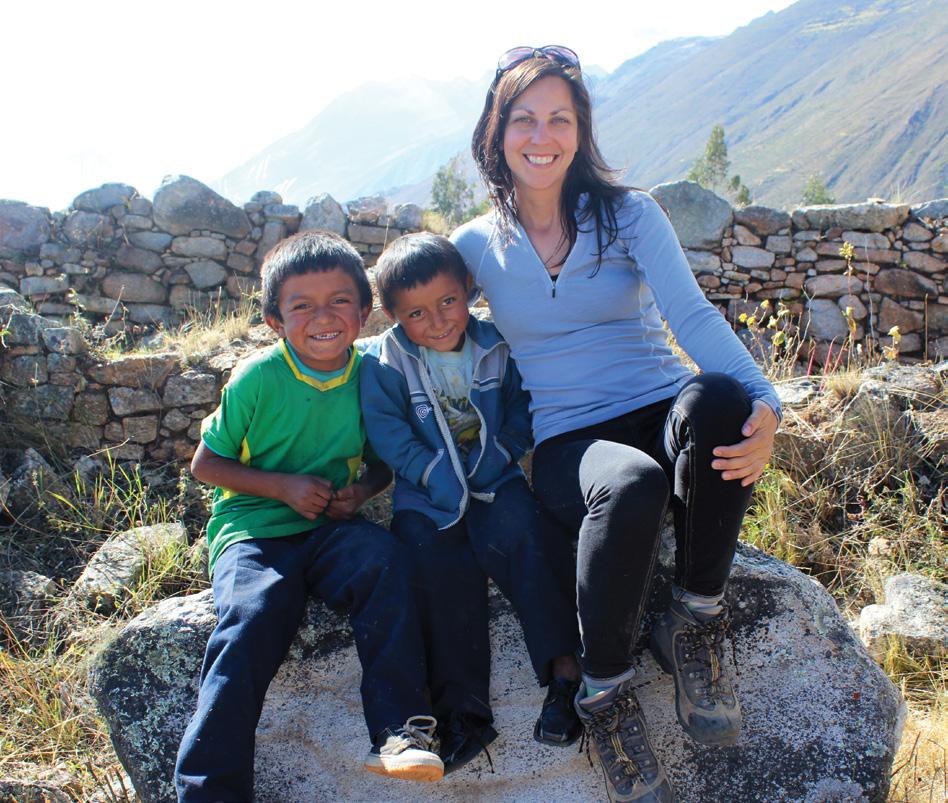
Stories are the thread that connects us to the past, to our place and to each other. Each family, community and culture has its own way of weaving stories to make meaning of our lives and to pass those on through the generations. Some gather around campfires and barbecue pits. Others share their histories while breaking bread at the dinner table.
The stories from Hualcayán, an ancient and contemporary village in the high Andes of Peru, have a history dating back more than 4,500 years. Yet, with the rise and fall of numerous civilizations followed by centuries of Spanish colonialism, many of those stories have been lost. Only now are they being reimagined through a partnership between the farmers who today reside in that remote mountainside village and the archaeologists working alongside them.
Facilitated by Rebecca Bria, archaeologist and assistant professor of anthropology in the UTSA College of Liberal and Fine Arts, the people of Hualcayán will be storytellers for a virtual reality journey through the rich history of their unique farming village.
Bria’s archaeological research in Hualcayán is uncovering life in an agrarian community dating back thousands of
years. It includes remnants of temples, tombs and homes surrounded by more than 1,000 acres of stone terraces and irrigation canals. After the Spanish conquest in the 1500s, the people from this village and across what is now Peru were brought into colonial cities where they were forced to do away with their ancestral practices as they became Christians.
“People were taken away from their community structure and the stories of their lives. When you fast-forward to the 1900s, agrarian reform returned the land to the people, but knowledge about the pre-colonial era was broken and fragmented,” Bria says. “Archaeology can bring in those narratives of what these places were and why we should care about them.”
This particular site is a treasure trove of archaeological finds. Bria and local archaeologists are uncovering ancient buildings in agricultural fields that connect ritual practices to farming. Here they are finding evidence of feasting where people consumed fermented corn beer from vessels crafted in the likeness of their ancestors. These discoveries are all fragments of a way of life yet to be pieced together and made into a full story of the people from this place.
The village of Hualcayán was reinhabited only 30 years ago with families who have no known connection to the ancient site. To make farming viable again, they restored the canal system that dates back to at least 100 A.D. in order to divert water from the nearby mountaintop to their crops. Agriculture is alive again in the village but without many of the stories of Hualcayán’s ancestral past.
To bring these stories to life, Bria and her Peruvian colleagues have taken steps over the past 14 years to establish a trusting and mutually beneficial relationship with the people
of Hualcayán. She has sponsored numerous heritage events in the community and has spent time with them to understand what matters to them most and what these ancient findings could contribute to their lives.
As Bria and her collaborators work with the community to recreate the historical narrative from their archaeological discoveries, they are finding that the children in the village are especially receptive. At the suggestion of the schoolteachers, they set up a competition where the children told stories and drew pictures depicting how they imagined their village in ancient times, answering questions such as: What might Hualcayán have looked like 2,000 years ago? Who were these ancient people? How did they farm? What do these ceramic vessels tell us about their lives?
With stories of the place emerging from the community, now Bria is collaborating with UTSA alumnus Bruce Carlisle on the best way to bring to life the deep and rich history of Hualcayán. They decided to create a prototype of a virtual reality video game using a combination of 3-D scans of archaeological findings, 3-D recreations of ancient structures, and the community’s stories. The prototype was created during a research trip to Hualcayán in 2022, where they received community feedback during and after its creation.
“The purpose behind the VR experience is to put people in scenarios where they feel rooted to the place and invested in its people,” Bria says. “It allows them to travel through layers of time and empathize, connect and fill in the stories of the experiences of people’s lives throughout Hualcayán’s long history.”
Because Hualcayán is situated at the trailhead of a popular trek in the Peruvian Cordillera Blanca mountains, the community envisions a visitor’s center where this VR experience can be shared with tourists. Moreover, proceeds from selling the game internationally could bring real economic gain for the community.

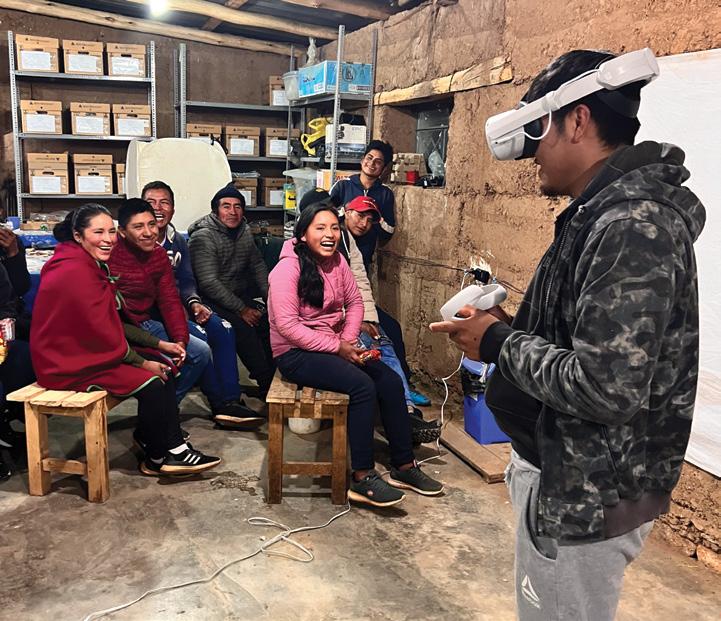
“The idea behind the project is as much about community development as it is about archaeology,” Bria says. “We are always keeping in mind the urgent questions of what are we doing here and why it matters to the people of this place.” S
BRUCE CARLISLE ’17,
is a key collaborator in the project in Peru as the lead for the VR video game development. Having honed his tech skills first as a parachute infantryman in the U.S. military, he discovered a new application of these skills in his studies at UTSA.
MY INTEREST IN USING THESE TECHNOLOGIES IS TO PROMOTE COUNTER NARRATIVES — STORIES THAT DON’T REALLY GET TALKED ABOUT. WHEN YOU LOOK AT GAMES, THE STORYTELLING IS VERY EFFECTIVE BECAUSE YOU’RE REVEALING THE STORIES BY INTERACTING WITH THE WORLD. THAT’S ONE OF THE ADVANTAGES THAT GAME EXPERIENCES HAVE BECAUSE YOU’RE THE ONE WHO’S THE ACTOR IN THE STORY.
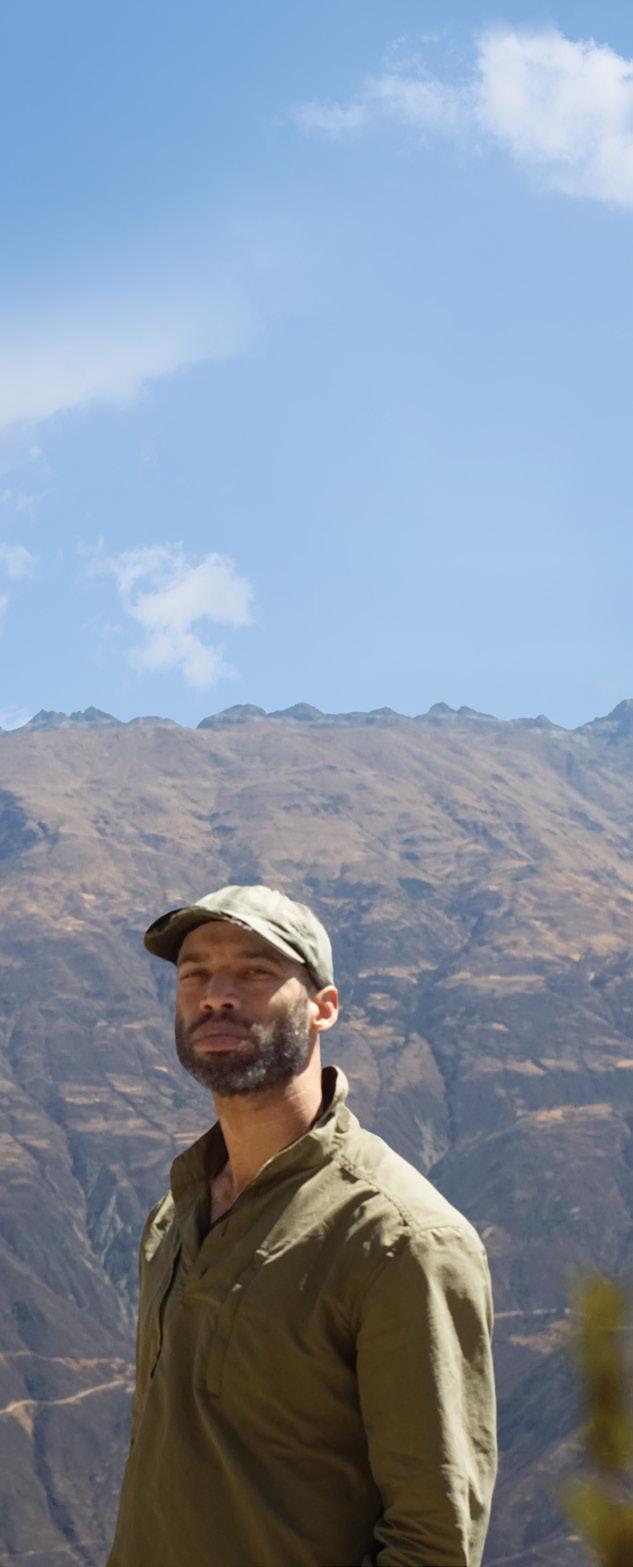
The purpose behind the VR experience is to put people in scenarios where they feel rooted to the place and invested in its people.
M.S. ’22previous page: Rebecca Bria and her godchildren Yefferson and Carlitos in Hualcayán, Peru. above: Children and young adults create 3-D models and test the VR game based on the ancient archaeological site. PHOTO COURTESY OF BRUCE CARLISLE ALL PHOTOS COURTESY OF REBECCA BRIA
 by Ari Castañeda
UTSA
by Ari Castañeda
UTSA
The Alamo City is at the intersection of two solar eclipses passing over Texas in the coming months. The first, an annular solar eclipse that mostly obscures the Sun, will take place on October 14. But that’s not the one that interests Dr. Angela Speck.
“The annular eclipse is cool, but it’s nowhere near as cool as the total eclipse,” says Speck, professor and chair of the UTSA Department of Physics and Astronomy.
San Antonio will behold a total solar eclipse on April 8, 2024. This happens when the Moon passes directly between the Sun and
Earth, casting a shadow on the planet and fully blocking out sunlight for a short period. The occurrence can only be seen from a small portion of the Earth’s surface.
“It’s the full-on experience of what you see, feel, hear, etc. It’s not like any other experience,” Speck says.
During a total solar eclipse, the sky darkens and the temperature drops, creating an unforgettable experience that Speck says everyone should see at least once in their lifetime. Even for those not involved in scientific research, witnessing a total solar eclipse can be a lifechanging experience.
“Most people don’t get to
witness a total solar eclipse in their lifetime,” Speck says. “You have months to plan where you’re going to be, and it’s totally worth getting into the path so you can witness this amazing spectacle.”
The path of totality — the narrow strip of land where the eclipse can be seen in its entirety — will pass through several major cities including San Antonio and Boerne, Texas. A partial eclipse will still be visible across much of North America for those not in the path of totality, but Speck says everyone should try to make their way to the northwest part of the city that day.
“Downtown San Antonio will not see it,” Speck explains. “If you get much further south than
Alamo Heights, you’ll be outside the path of totality.”
April 2024’s total solar eclipse is the last chance to catch one stateside until 2044.
Exposure to intense light from the Sun for even just a few seconds can cause permanent damage to the retina and looking directly at a solar eclipse can cause retinal burns. To watch a solar eclipse safely, you need to either have special viewing equipment to protect your eyes or you can use an indirect viewing technique like a pinhole camera.
“But once the Moon completely blocks out the Sun,” Speck elaborates, “you don’t need anything. It’s safe to look at.” S
A RARE OCCURRENCE IS COMING UP FOR TEXANS LOCATED IN JUST THE RIGHT SPOTS ACROSS THE STATE. ON OCTOBER 14, 2023, THOSE IN THE ALAMO CITY WILL WITNESS THE ANNULAR ECLIPSE, WHICH MOSTLY OBSCURES THE SUN, AND ON APRIL 8, 2024, THOSE ALONG THE “PATH OF TOTALITY” IN PARTS OF SAN ANTONIO AND BOERNE WILL WITNESS A TOTAL SOLAR ECLIPSE.
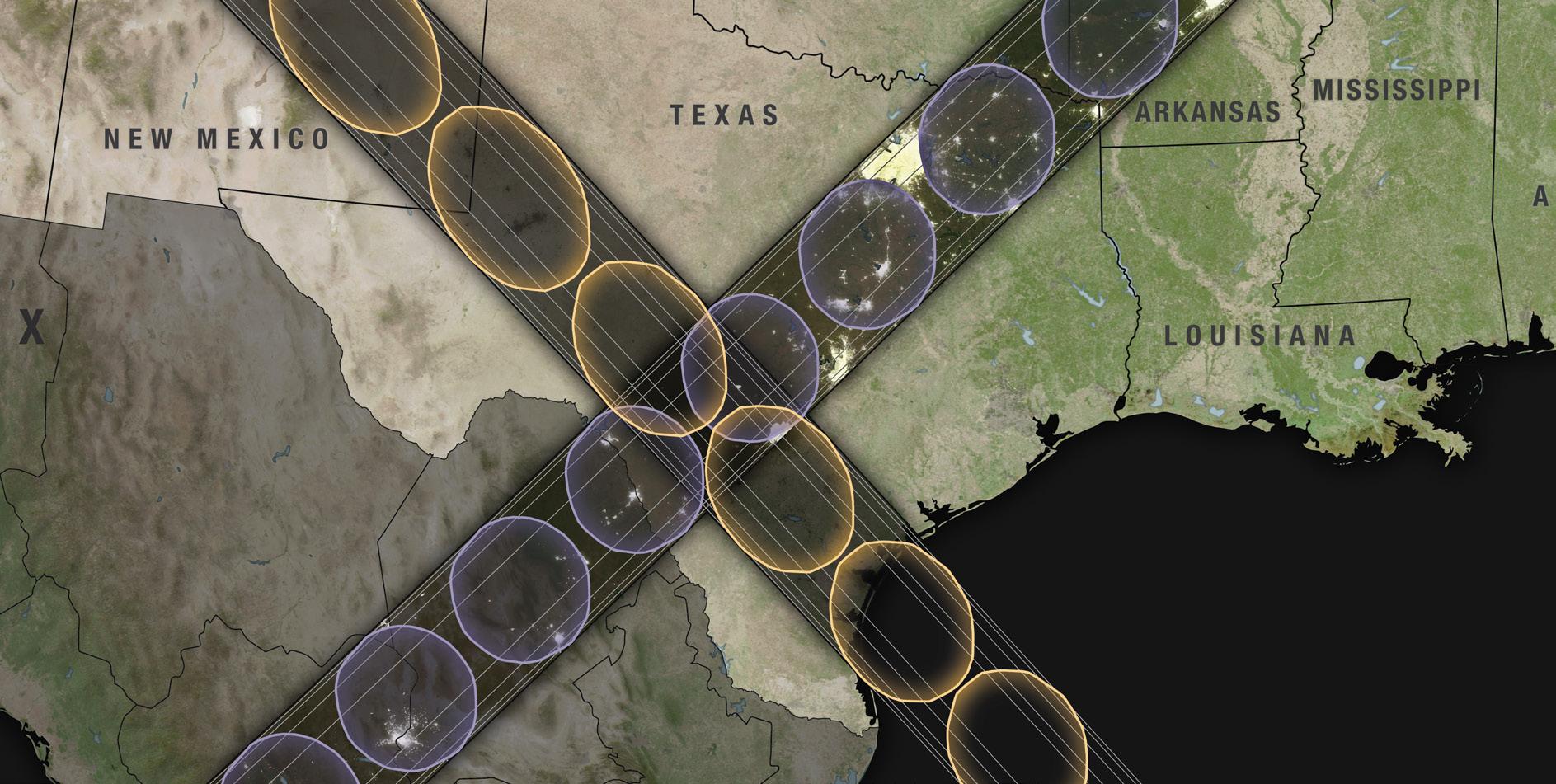
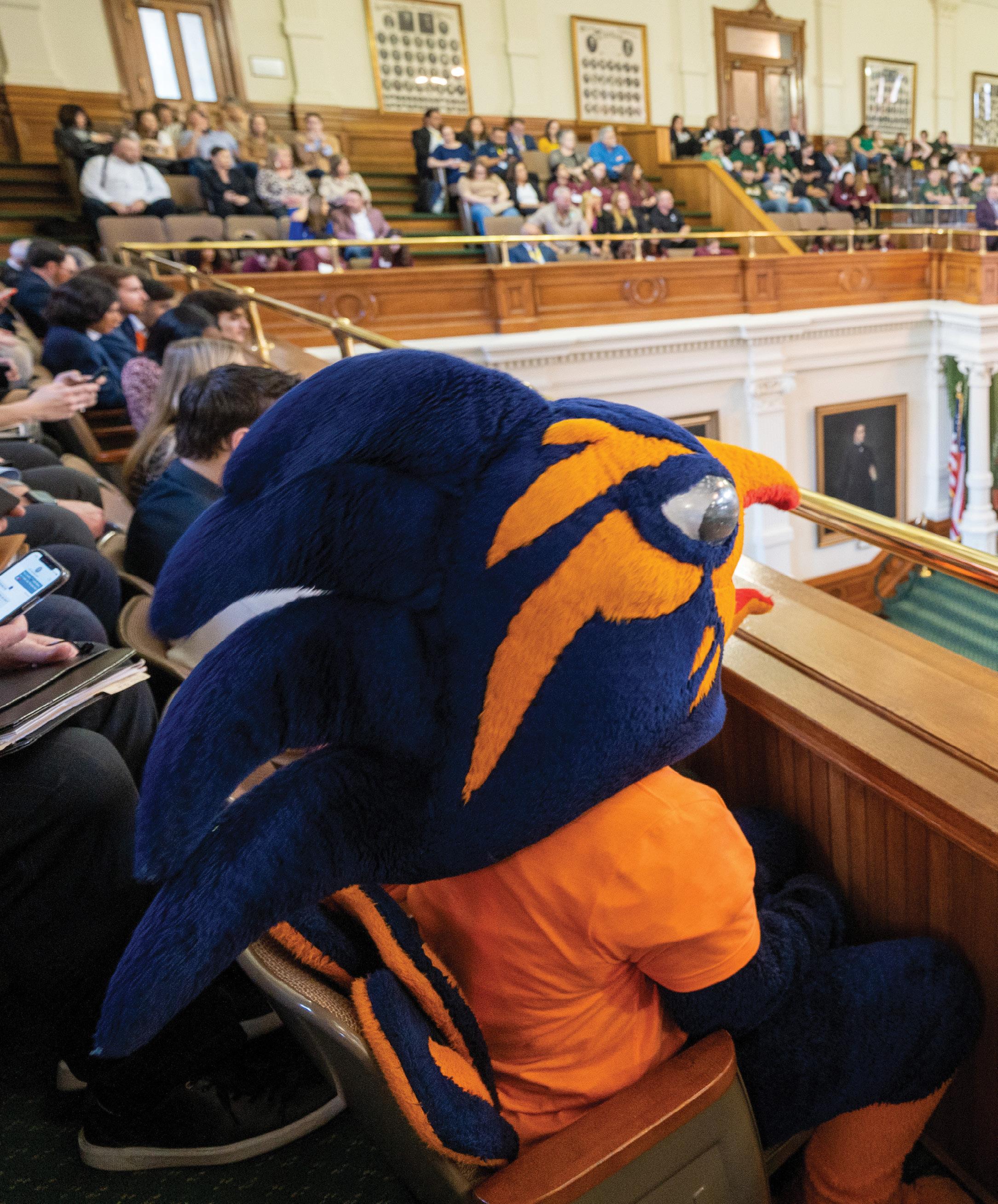
guests of honor
UTSA was celebrated in February at the Texas State Capitol for its role as a driver of economic prosperity and workforce development. Students, faculty and staff from the university — and Rowdy, of course — traveled up Interstate 35 for UTSA Day at the Capitol, highlighting the university’s Tier One research and student success initiatives with state lawmakers. The UTSA delegation was presented resolutions in the House and Senate commemorating the university’s accomplishments and bright future.

rom the day Athletics
Director Lisa Campos arrived at UTSA in the spring of 2018, she was putting together a game plan. Literally.
Much like UTSA
President Taylor Eighmy, who was hired months before her, Campos could envision the vast potential that the university could have in San Antonio and beyond. As Eighmy and the institution put a strong emphasis on achieving the coveted Carnegie R1 research status, Campos and her staff set out to win championships and the hearts of a sports-obsessed community eager to embrace something bold and exciting.
The “Roadrunner Game Plan” placed a renewed focus on the student-athlete experience, a culture of excellence and a new era of community engagement. With those three missions in mind, Campos got to work.
“Five years ago, we put together the aspirational vision that we wanted to transform lives as San Antonio’s nationally recognized Division I program,” Campos recalls. “We’ve been fortunate to have university leaders, community leaders, donors, coaches, staff and student-athletes
who also believe in that aspirational vision.” Campos collaborated with the city, county, donors and the Roadrunner Foundation to fund and construct the long-awaited Roadrunner Athletics Center of Excellence (RACE), the biggest piece in a strategy to enhance UTSA’s athletics facilities. She hired up-and-coming coaches such as Jeff Traylor and Derek Pittman, who have already led the football and soccer programs to conference championships, as well as acclaimed coaches like Karen Aston, Pat Hallmark and Sergey Avdeyev, who are ushering in new eras for the women’s basketball, baseball and men’s tennis teams. And, in a watershed moment for college athletics and sports culture at large, she partnered with activist Brenda Tracy to adopt the most comprehensive serious misconduct rule in the NCAA.
These and other efforts over the past five years have given UTSA a new air of legitimacy for student-athletes, coaches and athletics staffers across the nation. The ripple effect made its way to the playing fields and courts, where the Roadrunners have thrilled fans both in the Alamo City and beyond.
“UTSA Athletics has been on a roll in recent years, attracting top-tier coaches, winning championships and investing
in impressive new facilities,” says San Antonio Mayor Ron Nirenberg. “And as the Roadrunners reach greater heights in multiple sports, San Antonio’s support for UTSA gets stronger year by year.”
“I hear the stories every day. Whether they’re from New York or California, people are really paying attention to UTSA in a way they weren’t before,” Campos adds.
Like nearly all college athletic programs in 2020 and 2021, UTSA had to persevere through the pandemic’s effects including lost revenue and necessary cuts to budgets and salaries across the department. Yet by the end of 2021, UTSA Athletics was experiencing a high previously unreached — celebrating its first-ever conference championship in football, enjoying its recently opened digs at RACE and preparing for a major move from Conference USA to the American Athletic Conference in 2023. Campos’ peers have taken note.
“UTSA’s presence has elevated in a significant way since Lisa took over as their director of athletics,” says Heather Lyke, athletic director at the University of Pittsburgh and winner of the 2023 Cushman and Wakefield Athletic Director of the Year award. “As we all know, it is never about one person, one coach or one student-athlete,
BAR
UTSA’S MOMENTUM IN ATHLETICS IS ELEVATING THE UNIVERSITY’S PROMINENCE AND STRENGTHENING A LASTING BOND WITH SAN ANTONIO
but her leadership, thoughtful decision making, hiring decisions and overall vision to improve the program has been noticed and should be commended.”
“In her five years, Lisa and her team have done an incredible job of building the UTSA Athletics brand in Texas and nationally,” adds Mack Rhoades, athletic director at Baylor University. “She has made some great hires and has built an infrastructure that will sustain success into the future, keeping the UTSA name nationally relevant as an institution.”
Bob Bowlsby, a prominent figure in college athletics, also feels that Campos and UTSA’s constituents deserve commendation. He knows what it takes for athletic directors to thrive and institutions to make an impact. Bowlsby was the athletic director at the University of Iowa and Stanford University, guiding both departments to prosperous eras before serving as commissioner of the Big 12 Conference until his retirement in 2022.
“I don’t know that there’s any place in the state of Texas that has evolved more in the last five years than UTSA,” Bowlsby says before swiftly turning his attention to the next wave of investment UTSA will need to excel in The American. “The worst thing for your laurels is resting on them. The university will
have to continue to ploy for more resources and work to keep the right people in place.”
Strategic action will indeed be necessary to gain ground in The American, and that effort is already underway. UTSA Athletics recently unveiled “Roadrunner Game Plan 2.0,” with an eye on enhancing facilities and providing more support for studentathletes, coaches and staff. Meanwhile, UTSA Athletics, working with the university’s office of Advancement and Alumni Engagement, has also launched the Bold Champions in The American fundraising campaign to help the Roadrunners keep pace in their new conference.
“We’re not taking our foot off the pedal,” Campos says. “We’re going to keep moving forward.”
At this crucial precipice, Sombrilla Magazine looks back at the university’s recent athletic accomplishments, reflects on the Roadrunners’ rising status in sports culture, and looks forward to UTSA’s promising future in the American Athletic Conference.

I don’t know that there’s any place in the state of Texas that has evolved more in the last five years than UTSA.
BOB BOWLSBY FORMER COMMISSIONER, BIG 12 CONFERENCEabove: UTSA student-athlete Sigrid Kleive earned the high jump victory at the 2023 UTSA Invitational in March.
to the American Athletic Conference, Campos sees a parallel between UTSA’s trajectory and those of the University of Cincinnati, the University of Central Florida and the University of Houston. Those institutions left The American this summer to join the Big 12 Conference, but not before undergoing a metamorphosis of sorts. All three universities called major metro areas home, joined The American with plenty of promise and with teams that would become legitimate national championship contenders in several sports. Those tremendous runs in athletics did wonders for those universities.
“We are now where they were 10 years ago,” Campos explains. “They have elevated their profiles. And it all started in the American Athletic Conference with the investments that they made.”
The move to The American will increase UTSA’s visibility tenfold. Through the
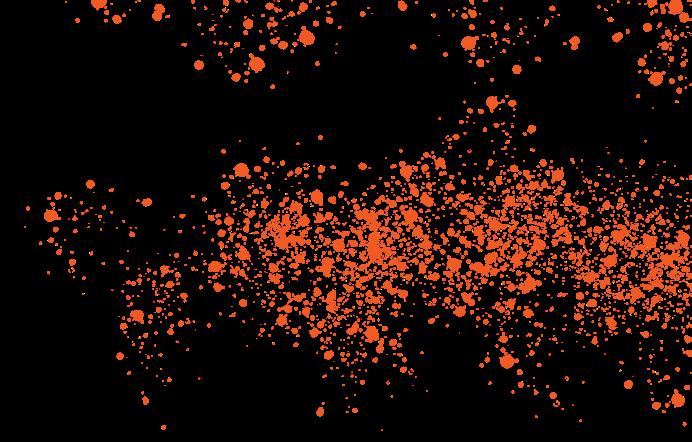
conference’s television contracts, national audiences will be seeing the Roadrunners much more frequently on the ESPN family of networks. They’ll see the tailgates splashed in orange and blue, they’ll hear the unrivaled roar of the Alamodome crowd, and they’ll experience the unique offerings of UTSA and San Antonio.
As UTSA rises to a more prestigious conference, Campos says, it will enhance the university’s notoriety. And as UTSA is seen more frequently, viewers will be more mindful of the institution’s presence and its reputation for excellence.
“The visibility and the exposure that the university is going to gain in The American will help us spread the UTSA brand across the country,” Campos says. “It’s going to help recruit very high-caliber students to our athletics department, and the increased recognition is going to help the university attract equally talented
students, faculty and staff.”
Campos is the first to admit that football marked the biggest sea change for UTSA. Traylor not only led his squad to back-to-back Conference USA championships in 2021 and 2022, he led UTSA to Top 25 rankings in both years. This meant more coverage on shows like ESPN’s SportsCenter and College GameDay, where sports fans quickly connected with a Roadrunners squad that threw it deep, ran for absurd touchdowns and staged jaw-dropping comebacks, making “meep meeping” impossible to resist.
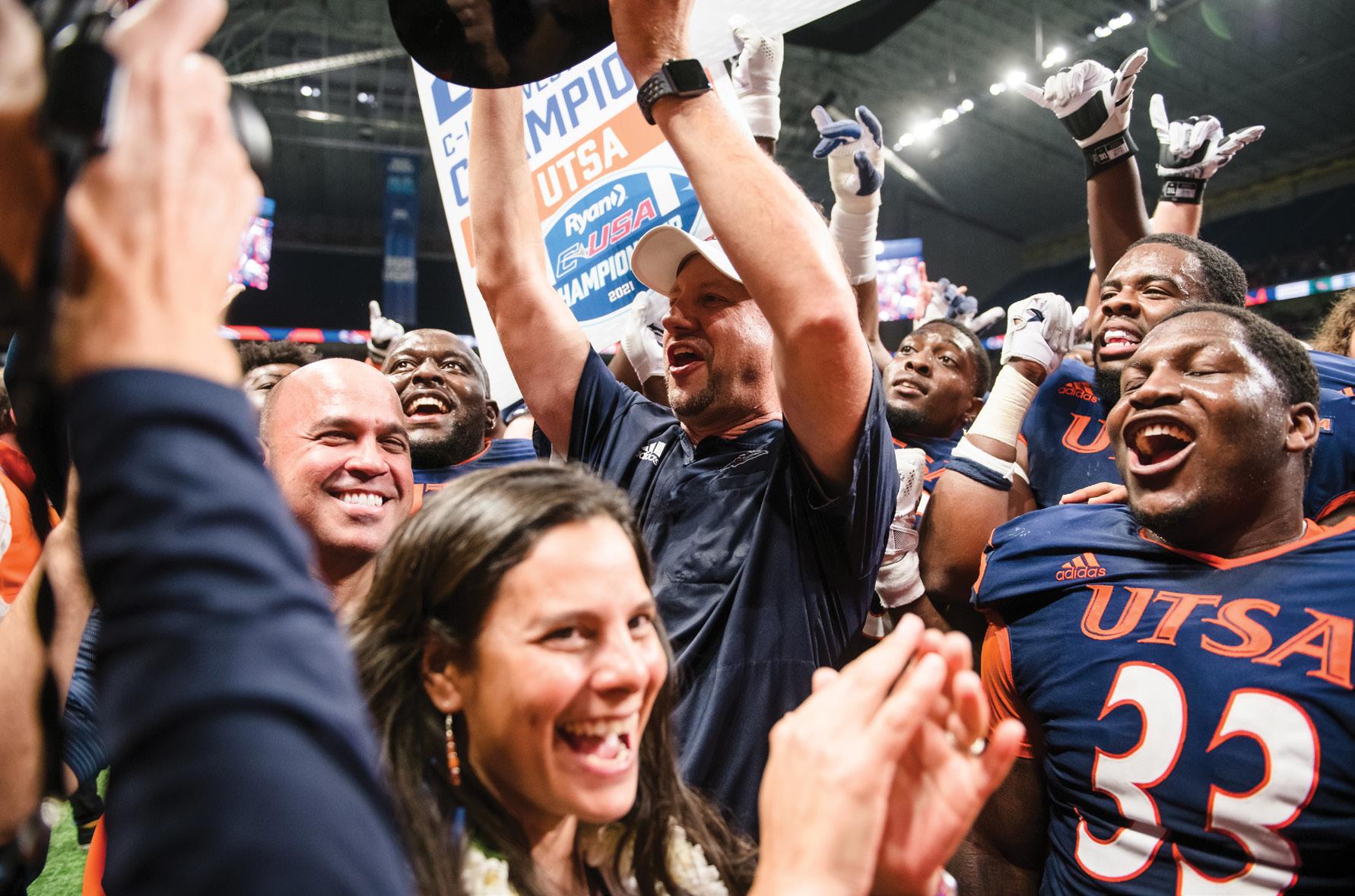
That interest in UTSA has spread to sports like soccer and baseball among many others. Campos hired coaches Pittman and Hallmark to lead those programs, and each have seen competitive successes lead to increased fan engagement.
“Everyone is feeding off of one another,” Campos says. “From our coaches to our student-athletes, success breeds success.”
The Roadrunners are surging as they make their debut in the AMERICAN ATHLETIC CONFERENCE. UTSA competes in 17 men’s and women’s sports and they’re doing so at a high level. Here are seven recent sports success stories to give every Roadrunner fan optimism and confidence heading into UTSA’s inaugural season in The American.
After breaking through with the program’s first conference championship in 2021, UTSA FOOTBALL won its second consecutive Conference USA title in 2022. Under head coach Jeff Traylor, the Roadrunners have been ranked in the Top 25 in each of the last two seasons and boast a combined 23 wins over that span. Only powerhouse programs Georgia, Michigan and Alabama have won more college football

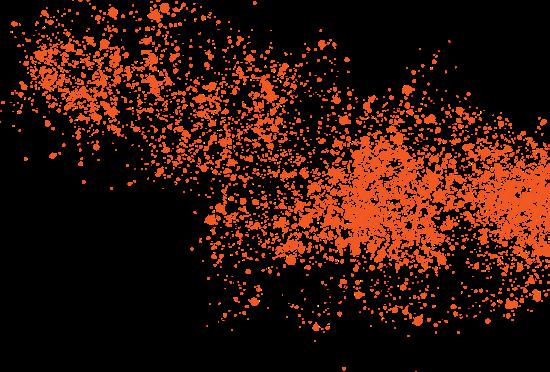


UTSA WOMEN’S GOLFER Camryn Carreon won the 2023 NCAA San Antonio Regional individual championship, a history-making performance in which she blew away the rest of the field by six shots. A San Antonio native, Carreon became the first UTSA women’s golfer to qualify for the NCAA Championships, competing for a national title in both 2022 and 2023.
Led by 2023 C-USA Coach of the Year Sergey Avdeyev, UTSA MEN’S TENNIS earned an at-large spot among the field at the 2023 NCAA Division I Championships, peaking at No. 34 in the national rankings during the season. With an 18-7 overall record, the Roadrunners accrued the most wins in a season since 1985. UTSA tandem Sebastian Rodriguez and Alan Magadan also reached the round of 16 at the NCAA Doubles Championships.
Under head coach Derek Pittman, UTSA SOCCER won the 2022 Conference USA Tournament, earning the program’s first conference championship since 2010 and a spot in the NCAA Tournament. Four Roadrunners earned tournament awards: Kendall Kloza was named the Defensive MVP; Anna Sutter was named the Offensive MVP; and Marlee
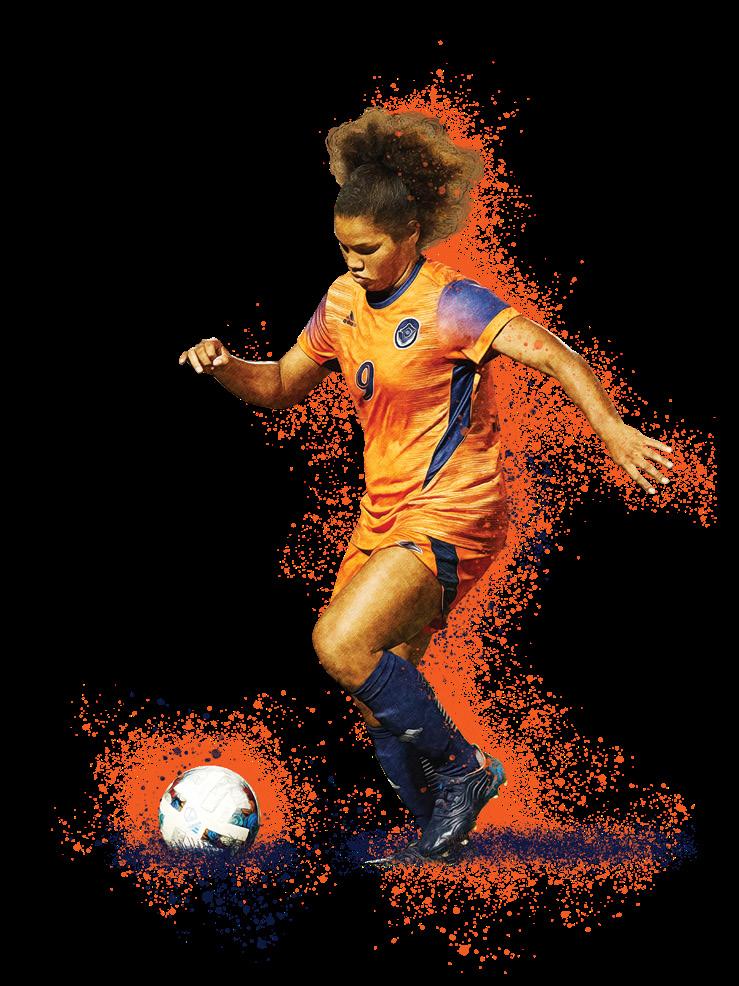
Decorated head coach Karen Aston is in the midst of rebuilding UTSA WOMEN’S BASKETBALL and the early results are promising. The Roadrunners dashed to the 2023 C-USA Tournament semifinals, powered by Jordyn Jenkins, who was named the 2023 C-USA Player and Newcomer of the Year. In her first season at UTSA, Jenkins broke the program’s single-season scoring record that stood for 32 years.

Guided by coach Pat Hallmark, BASEBALL earned its first ever Top 25 ranking this year and notched back-toback 38-win campaigns in 2022 and 2023. Only the 1994 and 2008 squads, with 39 wins apiece, have earned more victories in a season at UTSA. A program-best eight Roadrunners earned postseason honors in 2023, including infielder Antonio Valdez and pitcher Simon Miller, who was recently drafted by the Cincinnati Reds.
Four UTSA TRACK AND FIELD athletes earned AllAmerica honors at the 2023 NCAA Outdoor Championships. Men’s decathlete Jack Turner and hurdler Bashiru Abdullahi were named first- and secondteam All-Americans respectively and decathlete Joel McFarlane earned an honorable mention. On the women’s side, long jumper Oreoluwa Adamson also tallied an honorable mention in addition to second-team honors at the NCAA Indoor Championships.
 ANTONIO VALDEZ
MARLEE FRAY
ANTONIO VALDEZ
MARLEE FRAY
IN HER FIVE YEARS on campus, the grandest challenge in front of Campos was no mystery. To realistically compete with its peers, UTSA needed new athletic facilities.

“That’s what our constituents want. That’s what our coaches want. That’s what our student-athletes want,” Campos says.
And that’s why the Roadrunner Athletics Center of Excellence — or RACE, for short — was such a massive revelation when it opened in 2021. The $40.4 million Main Campus athletic training facility changed everything. Constructed through philanthropic gifts, support from the City of San Antonio’s bond referendum and financing from the Roadrunner Foundation, RACE provided UTSA’s student-athletes with much-needed academic spaces, a sports medicine center, new strength and conditioning facilities, locker rooms, meeting rooms, an equipment room and new practice fields, as well as offices for staff and coaches.
The brand-new Park West Fieldhouse will carry forward that holistic support for UTSA’s student-athletes competing in soccer and track and field. The facility, which opened this summer at UTSA’s Park West Campus, was partially funded by $8 million from Bexar

County. It provides a comprehensive athletic training facility with long-needed locker rooms, a sports medicine treatment space and a community room with a dedicated nutrition center. As part of its commitment as a community-engaged university, UTSA is making the Park West Campus available for public events such as athletics camps, competitions and clinics.
Notably, Park West will host The American's Track and Field Championships in the spring of 2024. “That wouldn’t have happened without the addition of this building,” Campos frankly states.
With support from the Bold Champions in The American fundraising campaign, the university is planning a new basketball and volleyball training facility connected to RACE at the Main Campus. This proposed 24/7 facility would provide two full-size NCAA practice courts prepped for volleyball and basketball in addition to many other amenities that would increase UTSA’s competitive edge in recruiting and retaining the nation’s best student-athletes and coaches. The city has already committed $5 million in funding for the proposed training center.
“These facilities prove that when the
community, donors and the university come together, we can really make things happen,” says Gene Dawson, president of the Roadrunner Foundation. “What’s encouraging is that UTSA has the support of the alumni, the business community, the city and the county. Everyone knows how important this university is to San Antonio and its future — and all of those entities are pulling in the same direction for the first time in UTSA’s history.”
These facilities prove that when the community, donors and the university come together, we can really make things happen.
GENE DAWSON PRESIDENT, ROADRUNNER FOUNDATION
IN THE DAYS BEFORE UTSA made its first appearance in the C-USA Football Championship Game in December 2021, it became clear that the city had fallen head over heels for the Roadrunners. At a time when storefronts and San Antonio landmarks would typically be decked out in festive holiday displays, small shops and large buildings across the 210 area code were aglow in orange to support UTSA leading up to the big game.
That love is still going strong. Fans packed the bleachers at the Arneson River Theatre for a rally celebrating 2022 conference championships won by the UTSA football and soccer teams. Earlier this year, citywide proclamations were made by Mayor Ron Nirenberg and Bexar County Judge Peter Sakai that February 10 would now be “UTSA 210 Day” in Bexar County. Take a look around San Antonio and you’ll spot hundreds of blue and orange “Let’s Go 210” signs on front lawns and more Rowdyheads on hats, shirts and jerseys than ever before.
“When I’m in business meetings, city meetings and bank board meetings, there’s usually a conversation about something happening at UTSA today,” Dawson says. “And it’s not just athletics — they see that there’s a lot happening at the university. The city realizes that UTSA is an important asset.”
UTSA President Taylor Eighmy has long referred to Roadrunner Athletics as the “front porch of the university,” and it turns out that front porch has some serious curb appeal.
The recent string of athletics success has helped reshape and reinforce the university’s identity. If the scintillating Saturday tailgates and soaring merch and ticket sales are any indication, San Antonio has truly discovered the joy of getting together to rally around the ‘Runners. Even the alumni who attended the university long before it had football or soccer teams — or even a Downtown Campus — are boasting about the Roadrunners and taking more stock in their experiences at UTSA.
“There’s a large alumni base, and as an alumnus, you want to feel like you belong to something special,” Dawson says. “This engagement in athletics is what’s helping UTSA build that special identity in the community, and in turn, the alumni are feeling more pride and they want to be a part of it.”
As the university rides a huge wave of momentum in athletics, while simultaneously achieving top-tier research status and continuing its impassioned downtown development, it’s hard to deny the transformation. UTSA has emerged as San Antonio’s university — and one that the nation is certainly becoming more familiar with.
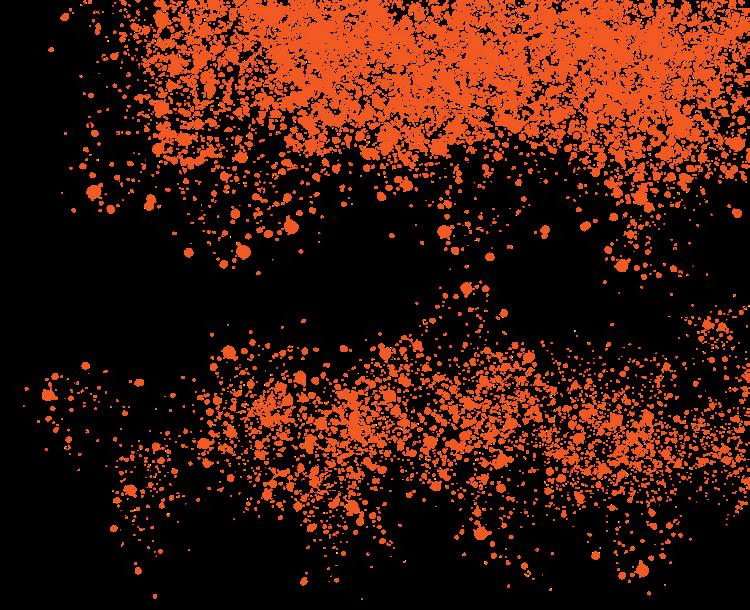

“UTSA’s impressive ascension in research, academics and athletics has sent the message across the nation that San Antonio is a primetime city with serious momentum,” Nirenberg says. “The university’s trajectory is spreading the word about San Antonio’s noteworthy progress and bright future.” S
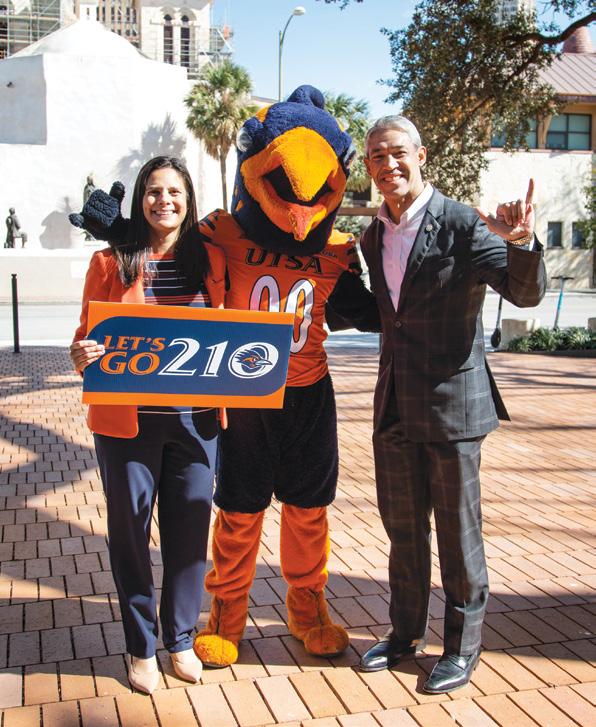
UTSA’s impressive ascension in research, academics and athletics has sent the message across the nation that San Antonio is a primetime city with serious momentum.
RON NIRENBERG MAYOR, SAN ANTONIO

unite in our battle song
Spirit of San Antonio member Jakarri Norsworthy plays his trombone as the band brings the Roadrunner spirit to Downtown San Antonio during the Battle of Flowers parade in April.
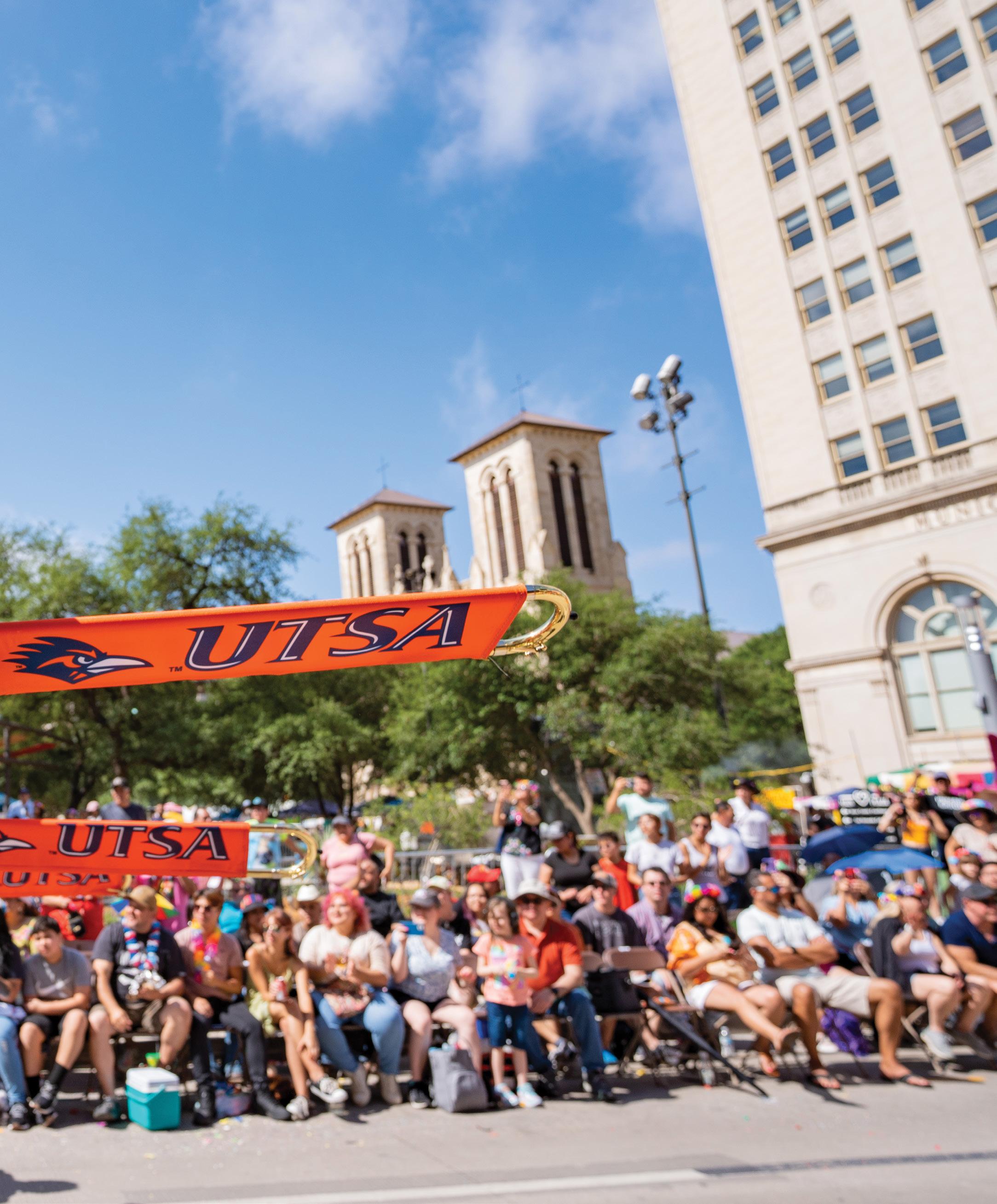
ike a growing cyclone that’s picking up speed and momentum, artificial intelligence (AI) is already leaving an impact on society that’s both abrupt and dramatic.
Take it from the tech dignitaries, industry insiders and astute academics who have struggled themselves to fully grasp the surge in AI development over the last year. They’ve used terms like awe-inspiring, revolutionary, terrifying and destructive. While none of these terms may paint a completely accurate picture of the incredible AI whirlwind, they don’t feel entirely off-base either.
Simply reflect on some of the greatest technological innovations in human history: The printing press accelerated the spread of knowledge and kicked off a new era of enlightenment. The calculator unlocked vast potential in mathematics, making complex computations faster and more accurate. The search engine transformed how we access and retrieve information from the world’s boundless digital expanse.
AI is poised to do all of those things (again) and more. It has the potential to produce medical breakthroughs that will improve — and even save — countless lives. It will give living and future generations dynamic creative tools that “Star Trek” screenwriters couldn’t have conjured. It could also become the most powerful driver for prosperity to date.
But let’s be honest: It’s also kind of scary. AI can create text, images and audio with a single prompt. It’s already ushering in a new era of career displacement. And like many other breakthrough innovations, it will be utilized by bad actors to distort, manipulate and harm.
Researchers and educators at UTSA are hoping to harness artificial intelligence for good — to enhance human capabilities, revolutionize industries such as health care, defense and energy, and push past the limits of what we thought possible.
In fact, thought leaders at UTSA were telegraphing AI’s tornado-like potential several years ago. In 2019, the university completed a cluster hiring of new faculty members dedicated to generating AI solutions that would make positive changes in society. The university then founded MATRIX: The UTSA AI Consortium for Human Well-Being in 2020 to embrace transdisciplinary approaches that would lead to greater advancements in artificial intelligence. UTSA also recently launched bachelor’s and master’s degree programs in artificial intelligence to provide students with industry-ready skills in this emerging technology across multiple fields.
In this story, UTSA faculty who have immersed themselves in the world of artificial intelligence will explain how the university has become a leader in a unique and imaginative area of study known as neuro-inspired AI. UTSA instructors will also discuss how they’re incorporating AI into the classroom to enhance learning and better prepare all UTSA students for a workforce that’s being reshaped in real time.
Artificial intelligence has the force to reshape the world. Here’s how UTSA is harnessing that force to make a positive impact.
UTSA is doing all sorts of AI research that many would consider mind-boggling, but the artificial intelligence field where UTSA is most highly excelling doesn’t boggle the mind as much as it draws insight from it.
TAKE A MOMENT to think about the unique complexity of the brain. Its billions of neurons retain knowledge, interpret senses, initiate movements and control behaviors. It also advances over time, responding to survival instincts and managing the demands of its surroundings while still fostering intellectual curiosity. Researchers studying what’s known as “neuro-inspired AI” want to decode this complexity to transform artificial intelligence technology, which scours for resources and excels at well-defined tasks, but isn’t as resilient or adaptive as the brain. And few institutions are doing a better job of making advancements in neuro-inspired AI than UTSA.
“When we started in neuro-inspired computing a little over a decade ago, people were speculative about the technology,” recalls Dhireesha Kudithipudi, Robert F. McDermott Endowed Chair in Engineering and founding
director of MATRIX. “Now, we are seeing a new wave in the field where an increasing number of groups want to apply neuro-inspired approaches to solve complex problems. We have hosted the 10th flagship conference on neuro-inspired computing elements right here at UTSA with global leaders in the field, including Intel, IBM and SpiNNaker. It is incredible.”
Unlocking the brain’s potential could have a tremendous impact on AI’s energy footprint. AI algorithms currently require massive amounts of data that require massive data centers that require massive amounts of energy to keep their servers running. The brain, by contrast, is extremely energy-efficient, Kudithipudi explains. Among her many AI research projects over the years, Kudithipudi’s team developed energy-efficient continual learning algorithms inspired by the honeybee brain. Although insect brains are a million times smaller
than human brains, they are still capable of remarkably complex behavior. Replicating that kind of efficiency in energy-constrained devices, such as mobile phones, would be transformational for society.
“The beauty of the brain is that it’s able to do information processing in an extremely compact form factor,” she says. “The brain is very small compared to the AI computing systems that are out there, many of which are consuming energy at an unsustainable rate.”
Groundbreaking research like Kudithipudi’s could lead to AI systems that require less energy, which is a big reason why industry leaders, the Department of Energy and the Department of Defense have expressed great interest in UTSA’s expertise. MATRIX is comprised of nearly 70 researchers from different domains that provide unique perspectives on artificial intelligence. This convergence is leading to more comprehensive problemsolving, says Amanda Fernandez, assistant professor in the UTSA Department of Computer Science.
“A few years ago, UTSA began a cluster hiring of faculty with research in AI across fields — bringing in researchers in the sciences, math, engineering, humanities and business with aligned interests. This, to me, has made all the difference,” she says. The resulting collaborations have not only helped UTSA researchers earn more funding, Fernandez adds, but have also introduced the university’s undergraduate students to cutting-edge research branching out through various areas of study.
Fidel Santamaria, professor in the UTSA Department of Neuroscience, Developmental and Regenerative Biology, co-leads the MATRIX research thrust focused on neuro-inspired AI. He attributes UTSA’s positive momentum in this field to a passionate mass of researchers interested in the relationship between computational systems and the way the brain works. UTSA now has many experimental researchers eager to tackle questions about brain function and their applications in computer science. Conversely, researchers in engineering and computer science, among other departments, have responded with an enthusiastic interest in neuroscience. His lab is a perfect example of this kind of cross-disciplinary teamwork.
“In my laboratory, I lead a diverse group of scientists composed of theoretical physicists, neuroscientists and electrical and biomedical engineers,” Santamaria says. “We perform experiments to understand how single neurons work, build computer models to predict their
behavior, develop theories to abstract their computational properties and implement them in electric circuits.”
UTSA’s collaborations in neuro-inspired AI have also proven fruitful in therapeutics. In another MATRIX research thrust, Amina Qutub, Burzik Professor in Engineering Design at UTSA, is co-leading a group exploring how AI can enhance human capabilities. Her research group has developed an experimental computational framework that mimics brain cell network dynamics. This research could help develop therapies to improve neurogenesis (the formation of new neurons in the brain) to help children and adults with neurological disorders.
“AI paired with medicine and engineering can solve humanity’s key challenges, like restoring neural function for children with rare diseases and adults with dementia, improving social equity and helping out caregivers,” Qutub says. “A challenge is holding AI to this high of a standard. MATRIX is doing exactly that.”
AI paired with medicine and engineering can solve humanity’s key challenges , like restoring neural function for children with rare diseases and adults with dementia, improving social equity and helping out caregivers.
UTSA professors Paul Rad and Arkajyoti Roy, along with researchers at UT Health San Antonio and the University of Pittsburgh, are using generative AI to give physicians a clearer picture for radiotherapy cancer treatments. They’re exploring how AI can improve the accuracy of adaptive radiotherapy with the hope that it can replace the current practice that clinicians use to review images and treat tumors.
Art professor Mark McCoin created the award-winning “Robotic Resonance,” a developing art experiment combining sound performance with robotics. He will implement AI into the next phase of the project, allowing his robotic “performer” to learn what it’s hearing and parse it out in real time. Through this project, McCoin seeks to advance a broader understanding of emerging technologies in music, performance art and the humanities.
Anthony Rios, professor of information systems and cyber security, is studying natural language processing (NLP), a branch of artificial intelligence that enables computers to understand and interpret human language. It is used in everyday applications such as Google Translate and Amazon Alexa. His research will help develop NLP models specific to geographic populations, ethnic communities and other population-specific groups.
UTSA established the ABAi Lab, a wearables and artificial intelligence laboratory providing precision treatment plans to improve learning among those diagnosed with autism spectrum disorder (ASD). Its findings are tailored for use in virtual reality, gameplay and other digital platforms to create greater access to treatments and standardize them. The ABAi Lab has already implemented AI to study how sleep patterns affect daytime behaviors in children with ASD.
There are many things that people do better than AI and many things that AI can do better than people, but psychology professor Joseph Houpt is exploring what happens when humans and AI work together. His research studies instances in which AI improves on an individual’s strengths and instances in which it degrades them. Ultimately, he wants to find out more about AI’s psychological effects on human teams and their performance.
Led by computer science professor Murtuza Jadliwala, the ScooterLab is an instrumental program within UTSA’s MATRIX AI Consortium. The lab has deployed e-scooters across the Main and Downtown campuses to gather data that will not only spur mobility and transportationrelated research but also help make advancements in AI technology — from machine learning to computer vision to image processing.
and Microsoft to bring their own groundbreaking AI technology out of the testing labs and to the public.
“It’s a mind-blowing amount of growth that hasn’t been paralleled before in history. We’ve never seen platforms take off like this,” says Ryan McPherson, professor of practice in the UTSA Department of Communication, who has been closely tracking the rise of generative AI programs. “TikTok wasn’t this fast. Facebook took years. Combined with other developments like quantum computing, this has the potential to be ‘industrial revolution’ big.”
But as ChatGPT captivated the masses, educators began seeing a troubling trend taking root. Students across the country were using ChatGPT to generate their essays and homework assignments instead of putting in the work themselves. Many K-12 schools and colleges moved quickly to prohibit the use of generative AI programs from their campuses to the extent they could, but UTSA sought a better path forward: adopting the trailblazing technology while simultaneously guiding students, faculty and staff to see its potential.
“Students have been hearing about it either from TikTok or from their peers, but we want them to know there’s so much else you can do with it,” says Marcela Ramirez, UTSA’s associate vice provost for teaching, learning and digital transformation.
Limiting the use of generative AI at UTSA would only hinder students, adds Melissa Vito, the university’s vice provost for academic innovation. It’s a technology that will only continue to become more popular and prevalent, and it’s already causing a startling disruption in many industries. Careers in marketing, finance, computer programming, design, human resources, journalism and law are all experiencing some kind of overhaul due to AI, and Vito says that the college graduates who have familiarized themselves with the technology will be better prepared to weather the changes.
IN THE LAST YEAR, there has been a wave of rapid acceleration in the field of generative AI, which is made up of software programs that use artificial intelligence technology to produce text, images, audio and other content. You’ve likely already heard about some of these generative AI programs.
By late 2022, people around the world were using DALL-E 2 and Midjourney to generate images: some stunning, some puzzling and still others controversial. Months later, OpenAI released its beefed-up ChatGPT-4, which could not only write a captivating essay when given a prompt but could also create the code for an entire website and score in the 90th percentile on the bar exam. By April 2023, ChatGPT already had 100 million general users, urging major players like Google
“People aren’t going to lose their jobs because of AI. They’re going to lose their jobs because they don’t know about AI,” Vito says. “I think what we’re doing now amplifies our message of digital fluency and digital literacy across the curriculum. Whether it was four years ago when we became an Adobe Creative Campus, or now as we’re exploring what it means to use AI in a course, the message is that we’re trying to prepare our students for the world of work five years from now.”
In talking to professors at UTSA about artificial intelligence, a theme inevitably emerges: Embrace AI now because it will be a significant companion to humanity for the rest of our lives and beyond.
UTSA associate history professors Abe Gibson, Cindy Ermus and Jerry Gonzalez are leading a team that’s combatting “deepfakes,” which are AI-created video, audio and images that depict real people doing and saying things they haven’t. Through the website HonestAbes.info, they are promoting digital literacy, informed citizenship and compassionate empathy to help neutralize the harm of AI-generated deepfakes.
Rita Mitra, an associate professor of practice in the UTSA Department of Information Systems and Cyber Security, says that a module on artificial intelligence introduces students to key concepts in AI and machine learning in the department’s introductory cyber security course. “Students need to know at a basic level how artificial intelligence systems work, not simply know how to use a tool that incorporates AI,” Mitra says. Last spring, her students completed an exercise comparing the usefulness of generative AI responses to resources that could be found via the Google search engine.
Students in Mary Dixson’s rhetoric class are already studying generative AI to develop important critical and analytical skills. Last spring, they poured over what they thought was a speech to Congress by Ukrainian President Vladimir Zelensky, but it was actually written by ChatGPT, which was prompted to craft a speech in Zelensky’s voice. Together, Dixson and her class compared it to Zelensky’s real speech to identify where ChatGPT went astray. “They did a really good job of evaluating what was missing, and a lot of it was pathos,” says Dixson, a professor of instruction for the UTSA Department of Communication.
Here are six innovative examples of UTSA faculty employing generative AI to enhance classroom learning and workforce preparation.
The UTSA Writing Program is piloting an AI generative writing tool called Packback this fall. Along the lines of a writing tutor, the software provides feedback to students while creating discussion posts and providing assistance with longer assignments such as essays.
Gianluca Zanella, an associate professor of practice in the UTSA Department of Information Systems and Cyber Security, started incorporating generative AI into his curriculum last spring. Most notably, he launched the “AI Challenge,” in which his students were charged to write a better essay than a generative AI program. The students were asked to perform two tasks: first, to point out weaknesses in the AI essay, and second, to prepare an improved piece through critical thinking, original creativity and knowledge-seeking.
Three years ago, women made up only 22% of the AI workforce around the globe, according to the World Economic Forum. Only 6% of the tech industry is women of color. That situation, however, is slowly shifting for women like recent UTSA grad Tomisin Adebayo with the help of programs such as Project LoveLace.
UTSA’s Project LoveLace aims to broaden and strengthen the gender diversity of the AI workforce by providing a community of support to help female STEM students blossom. Its mission is to increase representation, participation and the entrepreneurial skills of women in technology-focused careers. Female UTSA students work closely with faculty mentors through the program and immerse themselves in groundbreaking research environments. The project was launched through a gift from Xilinx (which was acquired by AMD in 2022).
Through Project LoveLace, Adebayo found a mentor in Amina Qutub. Over the course of two years in Qutub’s lab, Adebayo developed new algorithms to study brain cell communication from images obtained in the lab. Adebayo says she became even more certain about her future under Qutub’s guidance. They hosted talks to share their work with the community, during which she witnessed the impact of their research.
Qutub continues to guide her today. This fall, Adebayo is beginning her doctoral studies in bioengineering at Georgia Tech. Her experience with Qutub in Project LoveLace has instilled an unwavering sense of aspiration.
“Seeing that she’s done work both in the industry and in research is very inspiring,” Adebayo says. “Amina Qutub guiding me along the way is something that I really cherish. It lets me know that what I want to do is possible.”
The UTSA Department of Mathematics is launching a new introductory survey course for freshmen that will explore the connections between math, data science and artificial intelligence, and how they shape human culture and experience. Students will be guided through a series of 30 lessons that delve into the ways these fields intersect with our ideas, values and beliefs. Throughout the course, students will have access to GPT-4 to help them generate content and explore ideas.
So far, Project LoveLace has seen two cohorts with a total of 13 student and mentor pairings. They’ve embarked on various AI research topics in disciplines such as construction science, civil engineering and biomedical engineering. Among the research topics, participants have applied data to evaluate student sentiments about online learning during the pandemic using Twitter while others studied behavioral data to analyze cognitive changes.
“This is highly significant in the current context that we’re talking about because you see AI is everywhere all at once, and it’s impacting our daily lives in so many ways,” says Dhireesha Kudithipudi, director of Project LoveLace. “For us to support a little bit of our female students’ career ambitions with this kind of programming is just pure joy.” S
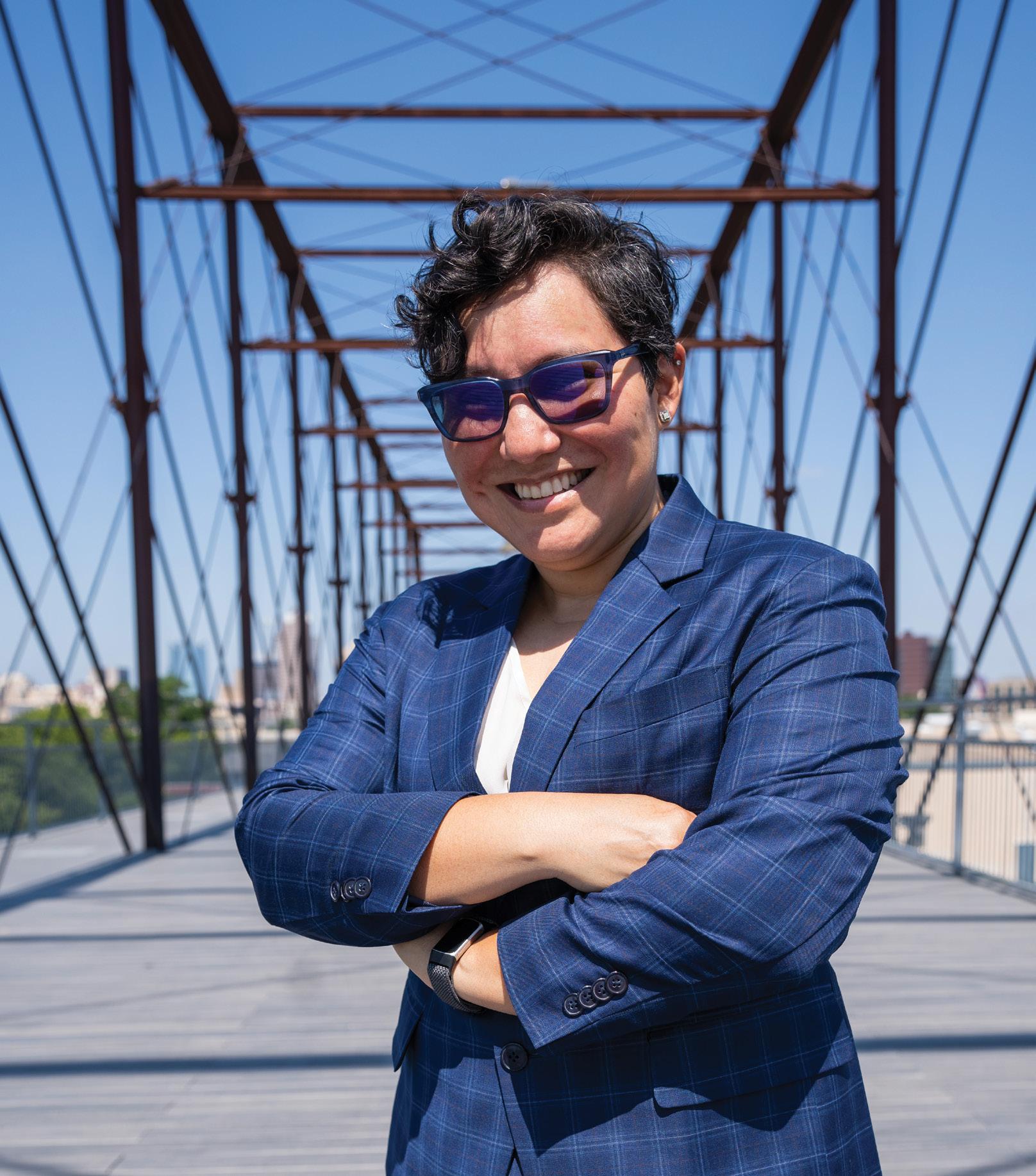
 by AMANDA CERRETO
by AMANDA CERRETO
Mariella Ozuna ’10, M.P.A. ’17 uses data to create a positive impact in San Antonio’s Eastside community
When we think of data analysis, we often think of the complex algorithms and data points that drive the newest innovations in technology, science and artificial intelligence. We don’t usually think of programs that provide grants to small businesses or provide homeowner's assistance funds. And yet, that’s exactly what Mariella Ozuna, the chief innovation and technology officer for San Antonio for Growth on the Eastside (SAGE) is doing.
“Data and analysis have meaning. These numbers really tell a story and give you clues to be more effective,” she says.
For Ozuna ’10, M.P.A. ’17, data analysis is a combination of detective work and storytelling, and her daily work involves creating narratives about the greatest needs for the people of Eastside San Antonio.
Ozuna’s main focus at SAGE is overseeing the Eastside Promise Zone, a 22-square-mile, federally designated geographic area for SAGE to offer “ladders of opportunity” based on highest need. The Promise Zone brings together partner agencies specializing in different things to achieve what’s considered a “collective impact” approach at addressing priority community issues.
Ozuna captures the data from SAGE and its partners, including organizations such as United Way of San Antonio, San Antonio Police Department, Goodwill of San Antonio and San Antonio ISD. As they implement their programs and activities, she then measures the effectiveness, which allows her to make data-driven suggestions to achieve a greater impact and to make a stronger case for funding.
“We find the meaning behind the raw data,” Ozuna says. “I take all these data points and find the storyline. I find ways to better implement these community efforts to maximize effect. I feel really fortunate to be sitting in a place where I get to see how the data and evaluation translates to actual outcomes.”
Born and raised in San Antonio, this work is especially meaningful for Ozuna. With her position at SAGE, she has struck the right chord for her desire to affect change while working with data and programming. But it wasn’t always like that.
“I come from a family of public servants. My mother was a teacher, and my father was a firefighter. I knew I had to work in something that I found meaningful, that really served people,” Ozuna says.
Seven years after pausing her undergraduate degree at the University of Texas at Austin and working in the financial industry, she decided to enroll at UTSA to finish her degree in political science. She also began working at the San Antonio Housing Authority where the combination of her education and her career allowed her to see a clear path to that meaningful impact she envisioned.
“I was building all of these skills and experience, specifically around program implementation and workforce development,” she says. “I was very passionate and was really committed to making a difference.”
It was Ozuna’s sister, who at that time was completing a Ph.D. in applied demography at UTSA, who encouraged her to pursue a graduate degree in public administration. The UTSA Master of Public Administration program (M.P.A.) helped Ozuna realize that she could still serve people and create change from a programmatic perspective.

With her work at SAGE, Ozuna is thriving personally and professionally. “The best part of my work is that it is different every day,” she says. “I work in an organization that attempts to be adaptive to community needs, which poses challenges to an administrator, but that’s my sweet spot.”
Ozuna’s community service extends well beyond her work at SAGE. She is passionate about her role as a volunteer ride director for the Mission Trail Rotary Club Charity Bike Tour, where she coordinates the annual fundraising event to help local non-profits complete small-scale projects in San Antonio. Every year, the event raises between $20,000 to $35,000 that goes directly to local non-profits.
“It’s about service above self,” Ozuna says, “and it’s really fulfilling and a fantastic way to meet like-minded people.”
Ozuna also serves on the Alumni Leadership Circle for the UTSA College for Health, Community and Policy. “One of the best things about the Leadership Circle is that I can offer internship opportunities to UTSA students at SAGE,” she says. “I really enjoy taking in interns and giving them those experiential learning opportunities.”
Whether it’s her day job with SAGE, her community work with the rotary club or her downtime working in her backyard garden, Ozuna loves to see things come full circle and to thread a narrative from numbers.
“All these numbers and data really mean something if you do something with it,” she says. “These numbers give you the knowledge that you need to serve more people and make a real impact in your community.” S
These numbers give you the knowledge that you need to serve more people and make a real impact in your community.
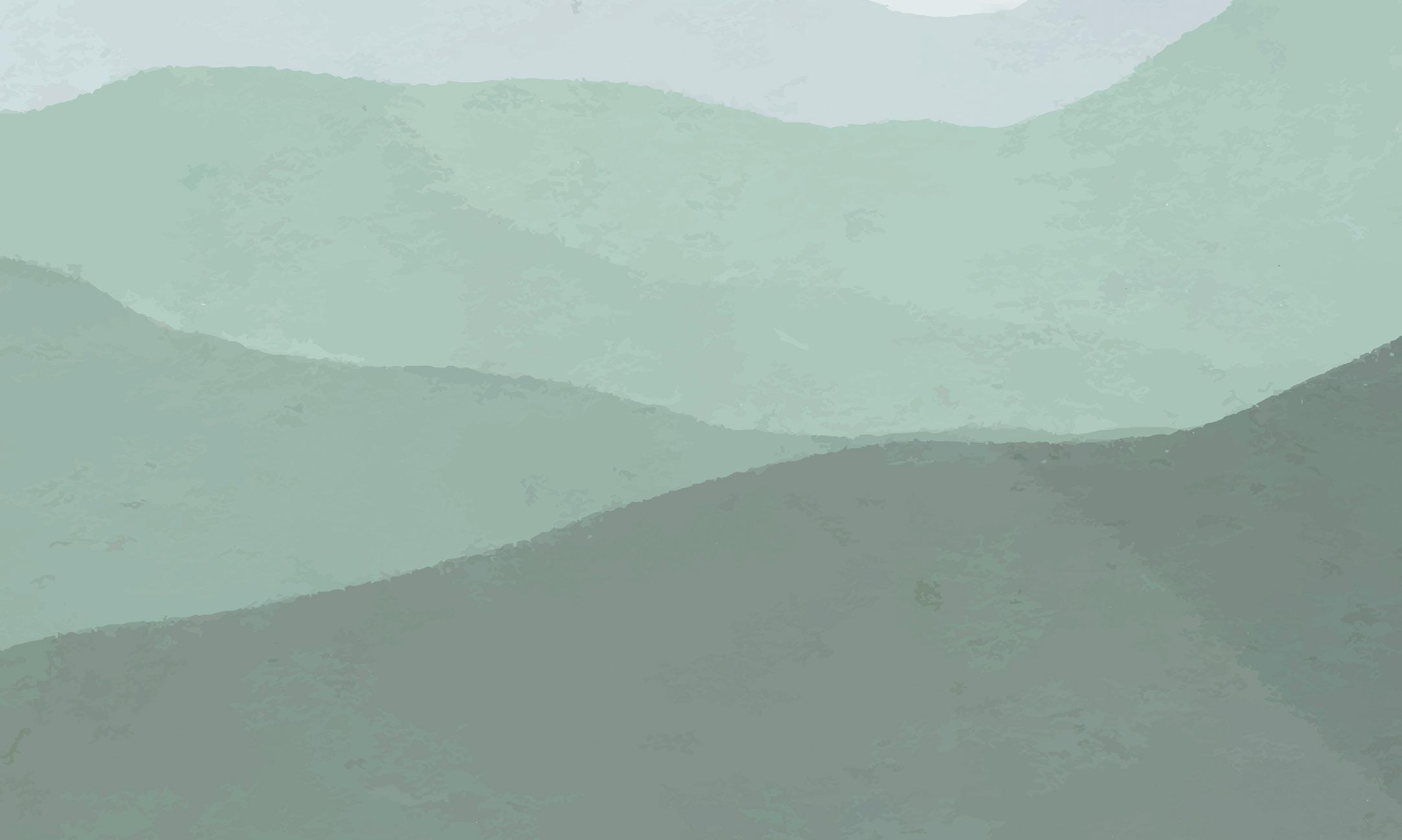

His passion for nature set James Misutka ’21 on a path to a career in federal service
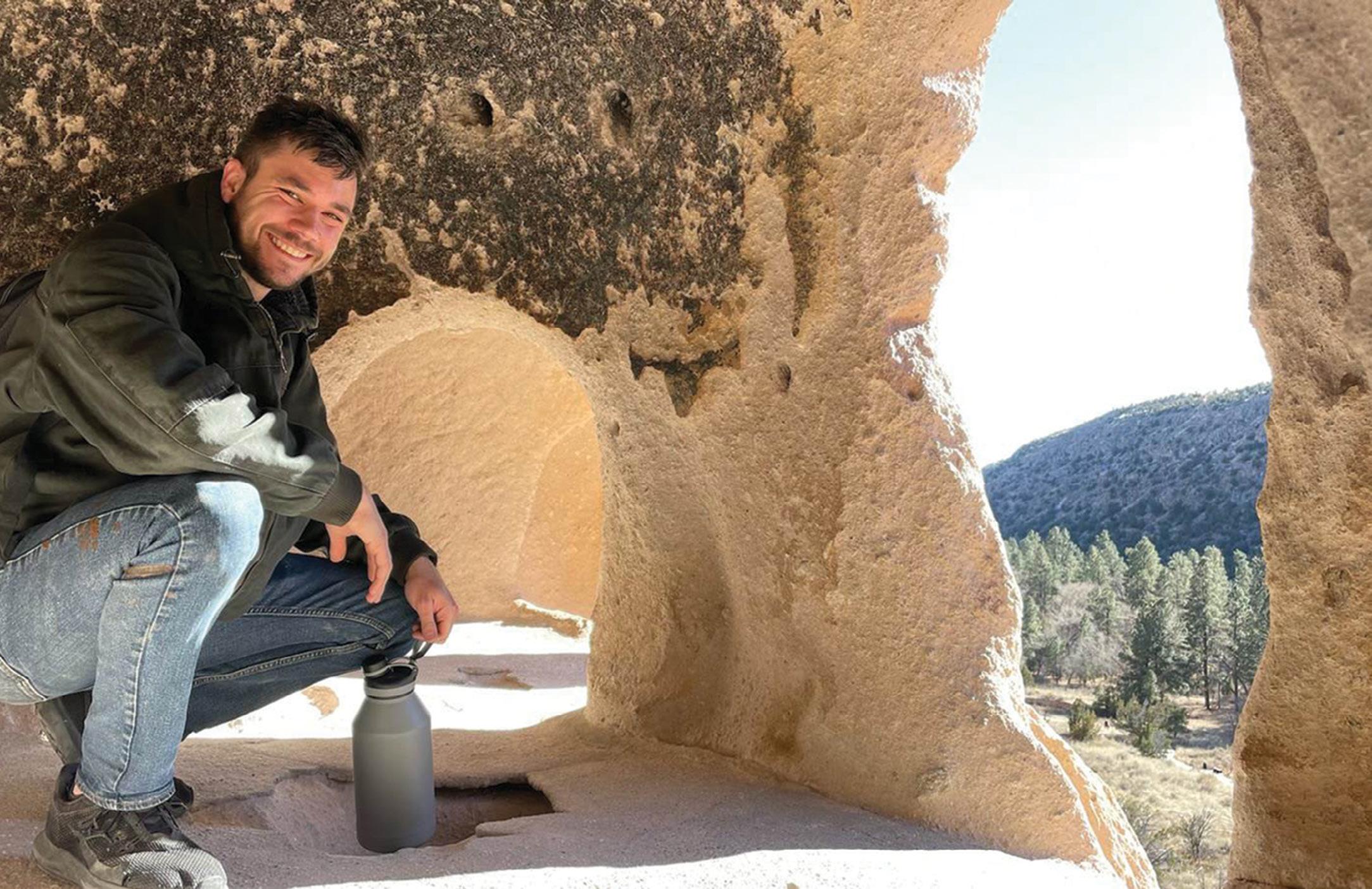 by Valerie Bustamante Johnson
by Valerie Bustamante Johnson
In the two years since he graduated from UTSA, James Misutka ’21 never expected to be riding in a helicopter across Michigan and Alaska rescuing people from fires or wading waist-deep in the Rio Grande and San Juan River basins in New Mexico to monitor watersheds. “Sometimes I feel like the luckiest person in the world because of the things I get to see and do or the places I get to go,” Misutka says.
When the Plano, Texas native graduated from UTSA with his B.S. in environmental science, he knew he wanted to be immersed in nature to make a difference, but he wasn’t sure what that would look like.
“I started talking to other people that were in the field and how they got their start. I felt more and more pushed toward the federal work service because I saw how many more opportunities there were,” he says.
In the fall of 2022, Misutka joined the U.S. Forest Service through its Recent Graduate Pathways Program. Misutka was one of nine people hired from different parts of the United States to work at the Mark Twain National Forest in Rolla, Missouri.
“We were each assigned our own district. I worked with two other individuals in the Poplar Bluff/Eleven Point Ranger Districts, which is the more southeastern portion of the forest,” Misutka says. “We were hired to work with the different project areas that the forest provides, which included recreation, wildlife biology, trail maintenance and engineering.”
During his time at the park, Misutka was also a part of several land restoration projects and several crews that helped with wildfire rescues in Michigan, New Mexico, Virginia and Nevada.
“We did a whole bunch of controlled burns throughout the season — probably about 30,000 acres,” Misutka says, describing the process of intentionally burning fields to control the undergrowth of the forest. “After the burn, the team I led put together the maps for the areas where we wanted to go in and plant short leaf pine saplings. We planted about 25,000 pine saplings in under two weeks. Those were some really long and hard days, but we got it done.”
While the U.S Forest Service set up a strong foundation for his environmental science career, Misutka was ready to transition to the technical side of the field.
In October 2022, Misutka joined the U.S. Geological Survey (USGS) as a hydrologist in Albuquerque, New Mexico.
“I’m tracking and mapping changes in our water system in the state of New Mexico. Most of the work I’m doing now is directly related to climate change. We’re tracking all the different changes in our water system so we can make sure farmers, cities and states are getting their water,” he says.
Misutka spends most of his time in the San Juan Basin, which is located in Northwest New Mexico and extends into Southwestern Colorado.
“The San Juan Basin is very important because it goes into the Colorado River, which supplies water to a lot of people,” Misutka says. “I’m looking for changes in height and discharge measurements on some of these sites. I’m profiling the river bottom and analyzing velocities of the river.”
The work Misutka and his colleagues do to track changes in the water system plays an important role for people across the state — from their everyday lives to the larger issues around crop irrigation and water supply levels for large populations in New Mexico.

“There was a farmer who came up to us to say he uses our data to know whether he can access his driveway because he sits on a flood plain,” Misutka says. “If it’s at a certain level, he can’t leave his driveway. Or people who like to go boating or kayaking use our data to see if the lakes are flooding or too low.” Misutka adds that he still can’t believe this is the work he gets to do on a daily basis.
“No two days are the same for me. I’m constantly seeking new opportunities for improvement and different people I can work with,” he says. “I just think it’s the coolest thing in the world. I always get giddy about science and have been an outdoors person my whole life. I get paid to go hiking. I get paid to be outdoors and do the things I enjoy while collecting data to learn about our water system.” S
I GET PAID TO GO HIKING. I get paid to be outdoors and do the things I enjoy while collecting data to learn about our water system.

From a young age Kimberly Garza loved to read and always had the desire to rewrite endings or write the sequel that didn’t exist. The UTSA associate professor of creative writing is now writing her own stories, including her debut novel, “The Last Karankawas,” which has gained high praise and explores how a place can mean many different things across generations and cultures.
What is your relationship to Galveston, where your novel takes place?
KG I was born in Galveston while my father was in medical school and my mother was a nurse. My mother was an immigrant from the Philippines, and over the years her family started coming over to live in Texas. There’s a big thriving Filipino community there, and I have really fond memories of Galveston. It has a special place in my heart, so I tried to write it in the book, but I didn’t want it to be paradisical. It’s got grit, it’s got reality. It’s ugly in a lot of ways, and I mean that with love. I wanted to portray it in this realistic kind of way in the book.
Your family ended up moving to Uvalde. How did that influence you as a writer, and how did it also influence The Last Karankawas?
KG I had wonderful English teachers who encouraged me to read and gave me books to read that inspired me to write. I think of my freshman English instructor who was the first one to give me a book by a Latina writer, who was Sandra Cisneros. I remember reading that and thinking that this is somebody who writes about characters who sound like us and whose lives looked very similar to mine. I felt very lucky that I had a lot of teachers and librarians and people in Uvalde who made the world a little bit bigger through literature. I hope that I’m doing something similar with this book, and maybe with what I write in the future. If you’re the kind of person who’s never seen some aspect of yourself on TV or in a book, then when you find it, it's powerful.
Before your novel, you wrote many essays and short stories that focus on ethnic communities. What sparked your passion to write about them?
KG As a young writer, I had to shift gears into realizing that I could write about myself or that I could write about my communities, my experiences or my people. It took me a couple of years, and I asked myself, Can I make her have brown hair instead of blonde? Or Can I make her have a last name with an a at the end of it? So, I think it became an exploration, and once I figured it out and got my footing, I ran with it. I’m proud of my background encompassing several things. There’s something very specific about being Mexican American, but especially being Mexican American in Texas and even moreso in South Texas. And there’s something specific about being the child of an immigrant and Filipino American. I want to celebrate the commonalities of this kind of beautiful experience being many things at once but also places where they clash a bit.
How does it feel to debut your first novel, but specifically one that represents Filipinos and Mexican Americans?
KG The feeling of debuting a novel and just having a book published, it really was a dream for me. But as far as the book being representative of Filipinos or Chicanos — I think a lot of pressure comes with that, especailly if this will be the first time people will read about us. I am very proud of it and take the responsibility seriously. So, I try to speak to that, especially to young writers and readers in these communities. I try to be a good example that we can do this, too.
Sombrilla Magazine spoke with Garza about how she is using her characters to shed light on the communities in Galveston, while also exploring her multicultural identity as the daughter of a Filipina immigrant mother and a Mexican American father.
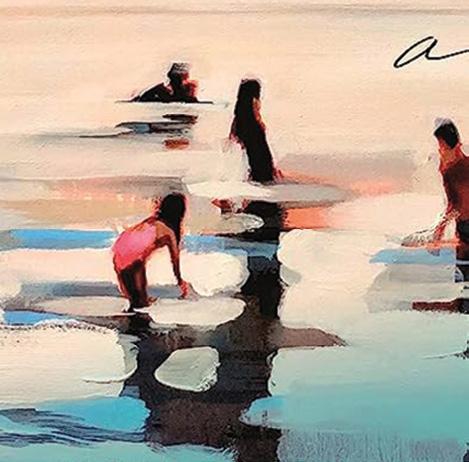
What encouraged you to move from writing short stories to writing a novel?
KG At a certain point as a writer, I think you just have to push yourself. I wrote “The Last Karankawas” as a collection of short stories at first. That helped me as a short story writer because it wasn’t quite as intimidating as saying, Now sit down and write a novel. But I do think as writers, if you’re not challenging yourself then you’re not growing. So, I like the idea of challenging myself constantly, and I feel rewarded by that challenge.
As an associate professor of creative writing at UTSA, what do you hope to teach your students?
KG One of the things I love the most about teaching creative writing at UTSA is the fact that I’m in a classroom with people who are writers. One of the greatest joys that I have teaching undergraduate creative writing is giving students all kinds of resources and tips on drafting, submitting, and publishing their writing. These are things that I never knew about until I was well into graduate school.
What is it like for you to be here at UTSA so close to home?
KG It’s been fulfilling to me to go to work every day and be around people who grew up where I grew up. I enjoy teaching students where this may be their first time seeing a professor who looks like them or sounds like them. So, I’ve been very fortunate and feel very embraced. S
